PinotFile: 11.23 May 12, 2018
|
Oregon Pinot Noir is Hot!Consumers and sommeliers are infatuated with Oregon Pinot Noir! Long considered a world-class wine region, but catching on even more with the wine cognoscenti, Oregon has seen unprecedented growth of late and now has more than 1,000 vineyards, more than 700 wineries, and grows 72 grape varieties.
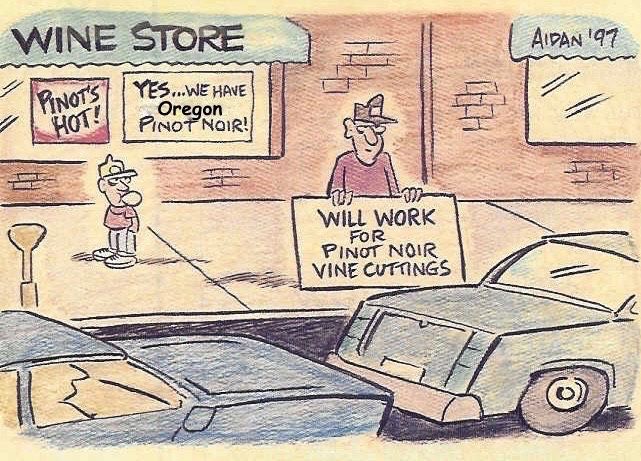 Full Glass Research released the newest economic impact figures in March 2018. The figures show all economic activity in Oregon related directly or indirectly to wine is $5.61 billion, compared to $3.35 billion just three years ago, an increase of 67% in statewide impact. The number of wine-related and induced jobs in Oregon totaled 29,738, up from 17,099 in 2013, representing a 74% increase. Wine sales grew 17% and Oregon is a major growth leader, percentage wise ahead of all other major growing states and countries around the world. Compared to the 2013 data, wine grape acreage increased 27%, and tons crushed by 42%. Oregon wineries bottled over 3 million 9L cases of wine and had revenues of over $529 million in 2016 (compared to $363 million in 2013) from the sale of packaged wine. Wine exported outside of Oregon increased from 127 million to 196 million, an increase of 53%. Consumers pay on average $39 a bottle for Oregon wine purchased through direct sales according to Ship Compliant data. Oregon wines sell well even though they are priced a little higher on average than wines from other US regions. Wines sold Direct-to-Consumer (DtC) increased 45% from 197 million to 286 million since 2013. Oregon wineries sold 23% of their bottled wine DtC. Case sales for Oregon wineries by destination is showing in the graph below. Don Hagge of VIDON Vineyard, (featured in this issue), created VinAlliance, an association of consumers and wineries for DtC sales with the benefits of traditional wine clubs. The program is in development. Visit www.shopvinalliance.com.
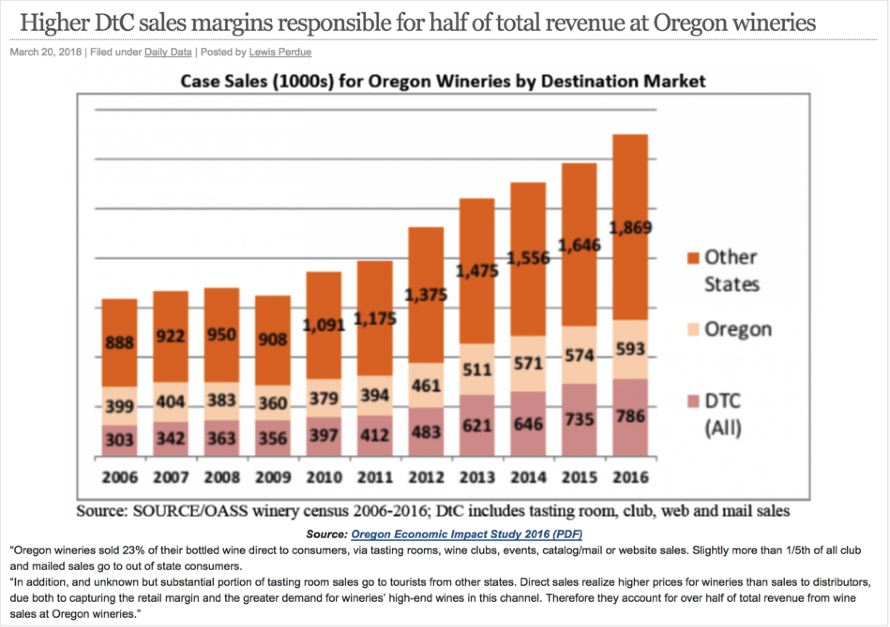 The star in Oregon is Pinot Noir where demand continues to grow at an average of 8% a year since 2013, compared to an average of 2% for the wine market as a whole. Rising quality of Oregon Chardonnay and the emergence of Southern Oregon and the Columbia Gorge are also increasing Oregon’s visibility in the market. Since the 2013 report, growth and investment in the Oregon wine industry has expanded with a net increase of 6,480 planted acres, and the number of wineries increased by at least 120. Still, 85% of Oregon wineries produce less than 5,000 cases. Social media references to Oregon wine are more complimentary compared to references to the wine industry in general. Higher-quality Oregon wine continues to show increasing sales. Speakers at this year’s Oregon Wine Symposium emphasized that Oregon should not become complacent and should concentrate on effective national marketing and continue to focus on tourism. Tasting room sales have fallen in other popular US wine region destinations but has held up so far in Oregon despite the fact that they are at the mercy of the terrible, rainy weather in in Willamette Valley in the winter. In other Oregon news, Oregon is in the process of obtaining approval for more sub-appellations within the Willamette Valley AVA, including the proposed Van Duzer Corridor, Tualatin Hills, Mount Pisgah and Lauralwood AVAs. A move is afoot, however, to preserve the value of the more well-known Willamette Valley name, and vintners are encouraged to include Willamette Valley as well as the sub-AVA of origin for each wine. David Adelsheim is planning to submit a truth in labeling law to the Oregon legislature that will require any Pinot Noir or Chardonnay bearing the Willamette Valley designation be made 100% with grapes from the AVA. According to a report from the North Bay Business Journal published online on April 26, 2018, at http://www.northbaybusinessjournal.com/northbay/sonomacounty/8205085-181/sonoma-napa-californiaoregon- wine, there are still thousands of acres of plantable land in the Willamette Valley AVA. Some of the smaller sub-AVAs, such as the Dundee Hills, are beginning to fill up, but there is still a number of acres left in the Chehalem Mountains, Yamhill-Carlton and Eola-Amity Hills AVAs. There are thousands of acres available in Folk County. A significant number of smaller vineyards with older vines are self-footed and either infected with phylloxera or at risk for phylloxera. There are few restrictions on new vineyard development, and it is fairly easy to get a permit for a winery and a tasting room on a property. Read more in the Oregon Wine Press: www.oregonwinepress.com/on-the-up-and-up.
Willamette Valley Pinot Noir
Steve Doerner, winemaker, Cristom Vineyards
“The most exciting wine area in the USA right now? I say it’s Oregon.”
Alloro Vineyard, Chehalem Mountains, Willamette ValleyThis 79-acre property in the Chehalem Mountains has 28 acres of vines planted to Pinot Noir and Chardonnay. Pinot Noir clones are 777, 667, 114, 115, Wädenswil and Pommard planted in Laurelwood series soil. The winery is specifically designed for vinifying Pinot Noir. Veteran winemaker Tom Fitzpatrick crafts three estate Pinot Noirs named Estate, Justina and Riservata. Photo below is of Tom (left) and owner David Nemarnik. Second photo shows an overview of the beautiful estate. The tasting room at the winery is open Thursday-Monday afternoons. Visit www.allorovineyard.com.
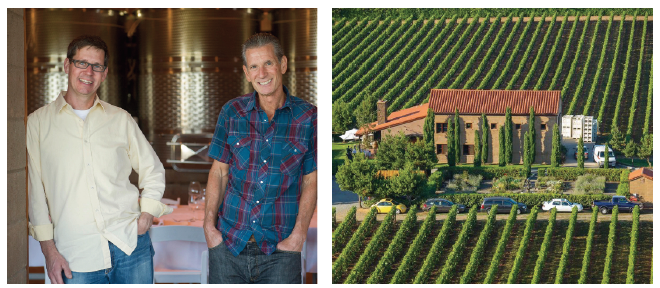
2015 Alloro Vineyard Estate Chehalem Mountains Willamette Valley Pinot Noir 14.1% alc., pH 3.65, TA 0.57, 1,600 cases, $40. Estate grown, produced and bottled. 46% Pommard, 35% 777, 19% 114. 100% destemmed, 4 to 6-day cold soak, native fermentation, native malolactic fermentation, aged 11 months in French oak barrels, 23% new. · Moderate garnet color in the glass. Vigorous aromas of black cherry, rose petal and earthy flora. Generous surge of cherry fruit really alerts the palate. Very fresh and juicy in a mid weight style, with terrific balance and some finishing intent. Score: 92
2015 Alloro Vineyard Estate ‘Riservata’ Chehalem Mountains Willamette Valley Pinot Noir 14.1% alc., pH 3.65, TA 0.57, 300 cases, $50. A 12 barrel selection blend to capture additional body, weight, texture and complexity. This wine represents the best marriage of all the diverse characteristics contributed by each of the individual vineyard blocks. Truly, a reserve wine. 32% Pommard, 46% 777 and 22% 114. 100% de-stemmed, 4 to 6-day cold soak, native primary and malolactic fermentations, aged 11 months in French oak barrels, 46% new. · Moderately dark garnet color in the glass. The nose is somewhat brooding but very genial, with aromas of dark cherry, raspberry and complimentary oak. More of everything in this wine, including concentration, intensity, tannin and finish. Makes a bold statement, yet easy to cozy up to. Mid-weight plus in style, with flavors of black raspberry, blackberry, blueberry and spice. Silky in the mouth with a deft integration of oak. Still a bit aloof but the potential is obvious. Considerably more giving when tasted the following day from a previously opened and recorked bottle. A stunning wine with swagger, depth and dimension. Score: 95
2015 Alloro Vineyard Estate ‘Justina’ Chehalem Mountains Willamette Valley Pinot Noir 14.1% alc., pH 3.66, TA 0.57, 150 cases, $85. A special barrel select blend, crafted to show off the very best of the vintage. The wine is named after winery owner David Nemarnik’s daughter. 81% 777, 19% 114. 100% de-stemmed, 4 to 6-day cold soak, native primary and malolactiic fermentation, aged 11 months in French oak barrels, 80% new. · This beauty is the polar opposite of the Riservata. More pastel in color with a moderately light garnet tone. Soaring aromas of cherry, raspberry, spice, balsam and nuttiness, becoming more demonstrative over time in the glass. More red-fruited in a mid weight plus, seductively elegant style that literally dances across the palate. The silk pajama texture creates the impression of grace and splendor, while the expansive finish resonates lip-smacking spicy goodness. There are notable tannins in the background, most certainly from the high percentage of new oak, but these tannins showed more amelioration when the wine was tasted the following day from a previously opened and re-corked bottle. This wine went from great to exceptional over night. Score: 96
Analemma Wines, Columbia Gorge, OregonAnalemma co-farms the Oak Ridge Vineyard, planted in 1984, with owners Thomas and Marlene Woodward. The vineyard is organically certified and dry-farmed. The vineyard sits in close proximity to Atavius Vineyard, another source for Analemma Pinot Noir. A 100% whole cluster Atavius Vineyard Pinot Noir will be reviewed later when a large number of 100% whole cluster Pinot Noirs will be tasted. Owner Steven Thompson has a vast experience in winemaking including Cayuse Vineyards in Walla Walla, Washington, and New Zealand’s Craggy Range and Seresin Estate. The winery’s Cellar Door is open Friday-Sunday from April 1 to October 31. Visit www.analemmawines.com.
2014 Analemma Oak Ridge Vineyard Columbia Gorge Pinot Noir 13.8% alc., 300 cases, $32. Organic grapes were fermented with a majority of whole cluster in stainless steel open-top tanks. The wine was aged on its lees for 16 months in neutral barriques and concrete. · Light ruby red color in the glass. A lighter-weighted offering, featuring aromas and flavors of red cherry, cranberry, wintergreen and spice infused with herbaceous thread that carry over in a short finish. A delicate tannic backbone makes for easy drinking. Score: 88
2015 Analemma Oak Ridge Vineyard Columbia Gorge Pinot Noir 13.5% Alc., 350 cases, $32. Organic grapes were fermented with a majority of whole cluster in stainless steel open-top tanks. The wine was aged on its lees for 16 months in neutral barriques and concrete. · Light ruby red color in the glass. Hi-tone cherry aroma with a woody riff. Engaging red cherry and red berry fruits in a mid weight style that seduces with a silken mouth feel. Gossamer tannins and redeeming balance, finishing modestly but pleasingly. Score: 90
Big Table Farm, Yamhill-Carlton, Willamette ValleyThe 2016 Pinot Noir wines reviewed here are part of the winery’s spring release. Winemaker Brian Marcy reported that the 2016 vintage was warm like the preceding two vintages with structures similar to the 2014s and the juiciness of the 2015s to balance. The wonderful art on the labels is drawn by Brian's spouse, Claire Carver, and is unique to each vintage. The labels are made by hand using a letterpress and thick printmaking paper. After each label is applied by hand, each bottle is carefully wrapped in tissue to preserve the letterpress paper’s texture and beauty. There is a product code on the bottom of each bottle so you don’t have to unwrap them to identify the wines. Big Table Farm has become extremely popular for its outstanding wines and working farm. Tasting is by appointment only. Visit www.bigtablefarm.com. Shipping is now free with case purchases.
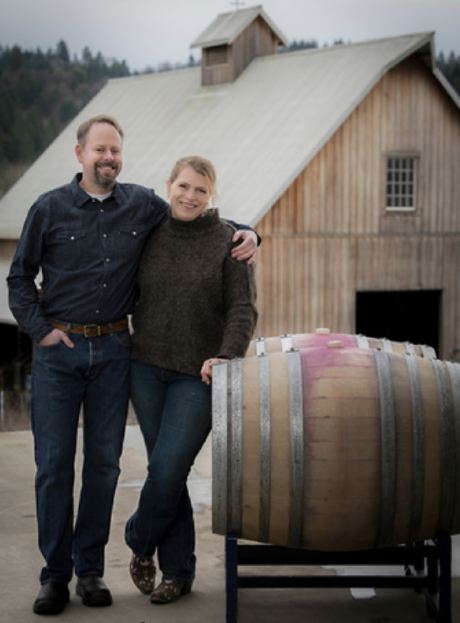
2016 Big Table Farm Willamette Valley Pinot Noir 13.9% alc., 1,835 cases, $45. Released March 5, 2018. A blend of grapes from eight vineyards making the wine a good representation of the Willamette Valley. This wine is more affordable because a lot more of it is made, but it receives the same care and handling s the rest of the lineup of wines. A drawing by Grace of Buttercup, an American Guinea Hog, graces the label. Bottled unfined and unfiltered. · Moderate garnet color in the glass. Lovely fragrance of red cherry, red berry, rose petal and sous-bois. Darker fruited on the palate with giving flavors of purple grape and blueberry. Soft and found in the mouth with a conforming texture and some finishing length. A hint of grapes from Pelos Sandberg Vineyard shows up. Beautifully composed, although not extremely complex. This wine is liable to be sold out by the time you read this review as it is very popular among “bigtablers.” Score: 91
2016 Big Table Farm Pelos Sandberg Vineyard Eola-Amity Hills Willamette Valley Pinot Noir 13.9% alc., 285 cases, $62. Released March 5, 2018. Clare’s drawing of vineyard owner Don Sandberg’s clippers graces the label. Bottled unfined and unfiltered. · Moderate garnet color in the glass. The nose offers a plethora of aromas including spiced boysenberry, burnt tobacco, compost , barnyard, and turned earth. Discreetly concentrated flavors of purple and blackberry with a hint of peppery spices and the guaiacol note that is typical of this vineyard. Noticeably more enchanting when tasted the following day from a previously opened and recorked bottle, when the fruit flavors were more intense and the wine was more outgoing. Score: 93
Broadley Vineyards, Willamette ValleyDistinctive, consistently top-notch Pinot Noir from the southern Willamette Valley. Initial planting of the estate vineyard began in 1981 and the first wines were released from the 1986 vintage. Second generation, Morgan and wife Jessica Broadley run the winery, with Morgan crafting the wines. Most of the Pinot Noir wines are from the estate vineyard. Uniquely, large wooden fermenters are used giving a richer and deeper complexity to the wines. Whole cluster is also used in fermentation when the vintage dictates. Visit www.broadleyvineyards.com.
2016 Broadley Vineyards Open Claim Willamette Valley Pinot Noir 13.8% alc., 50 cases, $35. 100% Pommard clone. Fermented in small open-top French oak wood fermenter for 14-21 days. Aged 12 months in neutral French oak barrels. · Moderately dark garnet color in the glass. Aromas of Marionberry, black cherry, spice, dried herbs and barrique. Light to mid weight and quite sleek and demurely satisfying, with flavors of purple berry and black cherry fruit. Welcoming and easy going now with minimal tannins. Score: 90
2016 Broadley Vineyards Estate Willamette Valley Pinot Noir 13.8% alc. $35. Composed of a variety of blocks containing newer and older vines. · Nicely scented with aromas of dark strawberry, blueberry, plum and spice. Gentle in the mouth with a light to mid weight core of red and purple berries with a touch of spice, a little smokiness, and a savory herbal thread. Forward drinking, with exquisite balance . This elegant wine draws you in with its charm. Score: 91
Cooper Mountain Vineyards, Willamette ValleyThis winery is celebrating 40 years since its founding in 1978 by Dr. Robert and Corrine Gross. Initially, grapes were sold to other wineries, but in 1987, Dr. Gross, a homeopathic doctor, started his own label from his estate vineyards. The winery was an early adaptor of holistic agriculture including organic and biodynamic farming practices by the early 1990s. They expanded to four vineyards on 125 acres. Every wine they make is made from Biodynamic grapes, with Demeter® certification since1999. In 2002, Cooper Mountain became the first winery in the US to gain label approval for a no-sulfite-added wine, and, in 2010, achieved carbon neutrality. The winemaker since 2004 has been Gilles de Domingo and the farm manager is Gerry Sanchez who has tended the vines on Cooper Mountain for more than two decades. Dr. Gross’s daughter, Barbara, is the operations manager. Varieties grown include Pinot Noir, Pinot Gris, Pinot Blanc, Chardonnay, Gewürztraminer, Gamay Noir and Tocai Freiulano. Total production is 20,000 cases annually. There are three tiers of organic and biodynamic wines. The Five Elements tier are vineyard designates and special selections that are produced from the most coveted barrels from the winery’s most prized sites. The Cooper Mountain Estate tier is a collection of moderately priced wines that are ideal aperitifs or can pair nicely with foods. Cooper Hill is the winery’s second label. In 1987, the owners converted their horse barn into the original winery. They soon outgrew that winery and built the current winery next door, opening the barn into a tasting room in Beaverton, just 10 miles from downtown Portland. The tasting room is open daily. Visit www.coopermountainwine.com.
The Cooper Mountain Vineyards “Life” Pinot Noir has no added SO2 during vinification, so the winemaker focuses on enhancing some type of phenols considered strong antioxidants. The goal is to replace the SO2 antioxidant role with naturally occurring phenols, according to winemaker Gilles de Domingo. The first step in making the wine begins in the vineyard. Two designated blocks are used that differ from the typical VSP canopy management in that leaves are pulled on both sides of the canopy at the bloom stage. This is meant to “teach” the berries to receive the sun at an early development stage. The Brix will increase slower than usual and the phenols will develop differently by enzymatic processes. Because of the combination of a minimum foliar surface and early exposure to sun, the vines will stress enough to develop an increased amount of phenols and polyphenols. The second step occurs at the crush pad. The grapes are 100% de-stemmed because the phenols contained in the stems will have the undesirable effect of precipitating desirable phenols. Primary fermentation occurs naturally by spontaneous fermentation in 1.5-ton open-top fermenters. The punch down regime is quite soft. Aging in barrels is a must, The gallic acid contained in oak will bind with the increased polyphenols forming a stable tannin complex. SO2 has a strong bleaching effect on phenols and is the reason many Pinot Noir wines tend to be lighter in color. A loss of 20% in color depth is common in practice. The result is that “Life” Pinot Noir has a deep color like Syrah.
2016 Cooper Mountain Vineyards Life Willamette Valley Pinot Noir 13.9% alc., $40. No sulfites added (may contain naturally-occurring sulfites). Certified organic and biodynamic. Johnson School and Meadowlark vineyards. Native fermentation. Aged 8 months in French oak barrels, 40% 2-year-old, 60% neutral. Unfined. · Very dark garnet color in the glass. Demure aromas of blackberry, blueberry-pomegranate and barrique. The fruit fades rather quickly in the glass over time. Full-bodied and ultra-rich, with a hedonistic core of purple and black fruits along with a velvety mouth feel. Fruit-driven and Syrah-like, yet tannins and acidity are in complimentary balance with the fruit load. A uniquely-crafted style, that is richly concentrated, but still retains charm. Score: 90
2015 Cooper Mountain Vineyards Willamette Valley Pinot Noir 14.2% alc., $25. Made with Demeter® Certified Biodynamic® grapes. · Moderate garnet color in the glass. An appealing appellation wine from an outstanding vintage, with aromas of blackest cherry, underbrush and teasing oak, leading to mid weight flavors of black cherry and blackberry complimented with a deft touch of oak. Juicy and very agreeable now, yet there is enough tannin to suggest decanting or a little more time in the bottle. Score: 92
2014 Cooper Mountain Vineyards Mountain Terroir Meadowlark Willamette Valley Pinot Noir 13.5% alc., $50. Certified Biodynamic® by Demeter®. Vineyard Series. Meadowlark Vineyard planted in 1982 in Willakenzie soil. Native fermentation. Aged 10 months in oak barrels. · Moderate garnet color in the glass. Charming aromas of blackberry, blueberry, sandy loam and toasty oak entice. Very satisfying in the mouth, with a polished texture, and a mid weight core of boysenberry and black raspberry fruit wrapped in gentle tannins. A classy wine with impeccable balance, drinking perfectly now. Score: 93
de Lancellotti Family Vineyards, McMinnville, Willamette ValleyDe Lancellotti wines are produced from distinguished vineyards in Oregon and produced in a shared winemaking facility in McMinnville, under the guidance of winemaking consultant Robert Brittan. Tasting is available by advanced appointment only December-April, with an opening to the public beginning in April. Three tasting experiences are offered. Visit www.delancellottifamilyvineyards.com for details and location of tasting room.
2016 de Lancellotti Famiglia Chehalem Mountains Willamette Valley Pinot Noir 14.0% alc., 225 cases, $40. A reserve blend from the winery’s biodynamically farmed home vineyard planted to clones ”828,” Pommard, 777 and 115. Only the best barrels are selected and blended. · Moderately light garnet color in the glass. Intoxicating nose with considerable nuance, offering aromas of cherry, boysenberry, nutty oak, dark rose petal and chocolate basil. Light to mid weight in extract, with vibrant flavors of cherry, strawberry and spice. A modicum of tannins add interest to the silken texture, with the wine finishing dry and unpretentious. Score: 90
2016 de Lancellotti Onelia Chehalem Mountains Willamette Valley Pinot Noir 14.0% alc., 60 cases, $60. A special limited bottling named after owner Paul de Lancellotti’s Italian grandmother. The wine is sourced from the winery’s biodynamically farmed home vineyard. · Moderate garnet color in the glass. The nose reveals scents of purple grape, cherry, earthy flora, spice and vanilla. The mid weight plus essence of crunchy black cherry and black raspberry fruit is quite satisfying. Juicy, with an earthy, woodsy tone, featuring balanced tannins and a thread of oak in the background. The finish is very good in length but not exceptional. More expressive when tasted the following day from a previously opened and re-corked bottle. Score: 92
2016 de Lancellotti Lachini Vineyard Chehalem Mountains Willamette Valley Pinot Noir 13.6% alc., 175 cases, $60. · Moderately light garnet color in the glass. Restrained, but pleasant aromas of cherry and nutty oak. Silky, sleek and refined in the mouth with a mid weight core of red cherry and berry and blueberry flavors. Nicely composed, with exceptional vibrancy and a quenching finish. Unchanged when tasted the following day from a previously opened and re-corked bottle. Score: 92
ÉLEVÉE Winegrowers, Dundee, Willamette ValleyAt the heart of Élevée is the concept of “winegrower,” one part “winemaker” and one part “grower.” The two are inextricably linked. Winegrower and proprietor Tom Fitzpatrick, UC Davis educated, after years of professionally growing and crafting wines for others in Burgundy, Napa Valley, New Zealand and Oregon, he had the opportunity to bring his “winegrower” concept to life. While the winemaker for Alloro Vineyard (where he remains today), Archery Summit’s Gary Andrus decided to sell a high-density, microsite in the Dundee Hills that he had planted in 1998. Tom and his spouse France purchased it in 2008 and named it Élevée Vineyard. In 2016, he began directing the farming on two additional and diverse sites in the Chehalem Mountains and Eola-Amity Hills. Farmed by him, he is able to craft wines that express the personality of each site and showcase the diversity of Willamette Valley terroir. Visit www.eleveewines.com.
2015 Élevée Winegrowers Élevée Vineyard Dundee Hills Willamette Valley Pinot Noir 13.7% alc., 300 cases, $48. Vineyard is located on a south-facing slope at 540 feet. Volcanic Jory series soil, vines densely planted. 100% de-stemmed, native fermentation, aged 12 months in French oak barrels, 38% new. · Moderate garnet color in the glass. Up-front aromas of cherry and spice pick up power over time in the glass. Flavors of strawberry, ripe cherry and raspberry, in a discretely concentrated style with a silken mouth feel and the right touch of oak. A bit of grippy tannin shows up on the finish, but this should be more accommodating with more time in the bottle. This wine is quintessential Dundee Hills in character and is quite affable now. Score: 93
Lenné Estate, Yamhill-Carlton, Willamette ValleyEstate grown wines from a 15-acre steep, south-facing sloped vineyard located just east of the town of Yamhill first planted beginning in 2001. Shallow soils, dense spacing and a diverse clonal mix consisting of Pommard and Dijon 115, 114, 777 and 667. The vineyard is dry farmed and sustainably managed. Owner Steve Lutz established Lenné Estate in 2002 and since has produced a stellar series of Pinot Noir wines that I consider among the best from the Yamhill-Carlton sub-appellation. The Lenné Estate Vineyard is managed and farmed by Steve and the wines are produced by Steve at Owen Roe with the help of their crew. The 2015 vintage wines are riper (with higher alcohols), as well as more concentration and tannin. and will need more time in bottle to ameliorate the hardy fruit tannins. The wines reflect the vintage that mirrored the 2014 vintage with a record-breaking number of over 90 degree days in July and August. The result was small, thick-skinned berries and the earliest harvest ever at Lenné Estate.
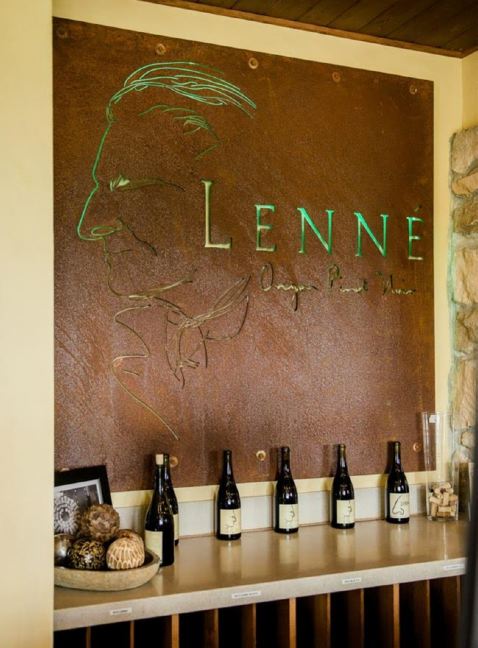 The tasting room is open Wednesday through Sunday, 12:00 p.m. to 5:00 p.m. Visit www.lennerestate.com. The following wines will be released May 19.
2015 Lenné Estate Le Nez Willamette Valley Pinot Noir 14.0% alc., pH 3.81, TA o.59326 cases, $30. The winery’s “infant,” early drinking wine that represents the entire vineyard and all five clones. “Le Nez” is French for “The Nose,” and is a reference to Karen Lutz’s late father Lenny, who also was the inspiration for the name, Lenné Estate. 100% de-stemmed, 5-day cold soak, aged 11 months in French oak barrels. · Moderate ruby red color in the glass. Deep aromas of cherry, rose, spice, mocha and pleasant oak. Light to mid weight in style, with easily approachable, robust flavors of black cherry and boysenberry framed by matched tannins and finishing with a juicy cut of acidity. The lightest, freshest and most forward wine in the 2015 Lenné lineup, but not a demure wine. Score: 91
2015 Lenné Estate Eleanor’s 114 Yamhill-Carlton Willamette Valley Pinot Noir 14.2% alc., pH 3.70, TA 0.59, 75 cases, $55. 100% de-stemmed, 5-day cold soak prior to inoculation of proprietary yeast, and aged 11 months in French oak barrels, 66% new. · Moderately dark garnet color in the glass. The most aromatic wine in the 2015 Lenné lineup, with intoxicating aromas of black raspberry, cola exotic spices and caramel. Mid weight plus in style, with hearty, masculine flavors of black raspberry and blackberry with a background hint of smoke and vanilla, and a rustic earthiness. Intensely sappy, yet vibrant with good freshness. Substantial tannins and frisky oak at this early stage. Much better when tasted the following day from a previously opened and recorked bottle when the aromatics made my knees go weak, and the tannins had moderated. Rare to find a Dijon 114 single clone bottling which makes this wine all the more intriguing. Score: 93
2015 Lenné Estate Karen’s Pommard Yamhill-Carlton Willamette Valley Pinot Noir 14.2% alc., 100 cases, $55. · Moderately dark garnet color in the glass. Shy upon opening, but very giving when tasted the following day from an opened bottle with aromas of black cherry, spice and fertile earth. The attack of mid weight black cherry fruit is focused and serious with remarkable intensity. An underlying earthiness adds interest. Acidity is well-mannered, but the tannins are muscular and a bit daunting initially. This is the most backward wine in the lineup and will benefit from a couple years in the cellar to ameliorate the fruit tannins. That said, it is hard to ignore the glorious fruit now, especially if you decant. Score: 93
2015 Lenné Estate Jill’s 115 Yamhill-Carlton Willamette Valley Pinot Noir 14.2% alc., 100 cases, $55. · Moderately dark garnet color in the glass. Rather exotic nose featuring black cherry and blackberry fruits, spice, and toasty oak. Mid weight plus in concentration, offering a luscious array of ripe purple and black berry flavors. Somewhat burly, with husky tannins, yet the wine glides across the palate. Still closed in and out of sorts with prominent oak on the sideline and muscular tannins on the finish. Much better when tasted the following day from a previously opened and re-corked bottle, with more integration of oak and tannin and more expressive fruit. This one should be cellared for a couple of years for full enjoyment. Score: 92
2015 Lenné Estate Yamhill-Carlton Willamette Valley Pinot Noir 14.2% alc., pH 3.76, TA 0.59, 376 cases, $38. A barrel selection of the finest wine from the estate vineyard. Primarily Pommard and clone 114, with balance made up of 777, 115 and 667. De-stemmed, 5-day cold soak prior to inoculation, aged 11 months in French oak barrels, 20% new. · Moderately dark garnet color in the glass. Shy perfume of black cherry, dark red berry and oak barrel. Middleweight flavors of purple and black fruits with an herbal thread. Sleek in texture with welcome balance, offering a giving purple-fruit finish of noticeable length. Unchanged when tasted the following day from a previously opened and re-corked bottle. Score: 90
2015 Lenné Estate cinq élus Yamhill-Carlton Willamette Valley Pinot Noir 14.2% alc., $80. This wine is made only in great vintages. The name, cinq élus means “five chosen,” reflecting that this wine is a blend of the best barrels from all five clones grown at the estate vineyard. · Moderately dark garnet color in the glass. Hi-tone aromas of ripe strawberry and Bing cherry with a hint of mocha. Clearly a step up in class, with a mid weight core of delicious purple and black fruits backed by polished tannins. Great energy, vibrancy, length and intensity. Didn’t taste it the next day because my neighbors and I finished it off the same day I opened it. Score: 94
Lundeen Wines, McMinnville, Willamette ValleyNative Oregonian Michael Lundeen is now the third generation steward of his family’s ancestral home in Yamhill County, and the latest to tend the vineyards there. Michael has been crafting Willamette Valley Pinot Noir and Chardonnay since 2006. The home Poverty Bend Vineyard Estate is farmed naturally and sustainably, with an avoidance of the use of synthetic chemicals, herbicides and fertilizers. The Articulate wines are barrel selected blends from vineyards across the Willamette Valley produced in exceptional vintages. They are meant to show the highest expression of the vintage as well as the Willamette Valley as a whole. The Single Vineyard wines are put into the fermenter with some percentage of whole clusters since Michael believes that great vineyards express their uniqueness not only in fruit but in the complex contents of the entire grape cluster. The general style of the wines reflect lean esthetic and savory characters. Tasting is available by appointment at the Walnut City Urban Winery Tasting Room and Wine Bar (www.walnutcitywineworks.com) in McMinnville where wines are available for purchase. Shop online at www.lundeenwines.com.
2014 Lundeen Z’ivo Vineyard Eola-Amity Hills Willamette Valley Pinot Noir 13.6% alc., pH 3.63, 100 cases, $40. Released February 1, 2017. 25-acre vineyard originally planted by Dr. John Zelko in the mid 1990s. 40% whole cluster. Un-inoculated fermentation, 24 days on the skins with pump overs and punch downs. Aged in a mix of one new and the remainder neutral French oak barrels. · Moderately light garnet color in the glass. Aromas of pie cherry, forest floor and balsam lead the way to a light weighted style that offers cherry, cranberry and raspberry flavors along with a modicum of oak. A lean wine with energetic acidity, modest tannins and a tart cherry finish. Score: 88
2014 Lundeen La Cantera Vineyard Chehalem Mountains Willamette Valley Pinot Noir 13.6% alc., pH 3.59, 106 cases, $40. Released February 1, 2017.Sourced from a 20-acre vineyard planted by John Davidson in the late 1980s. Laurelwood soils. 100% de-stemmed, un-inoculared fermentation, 21 days on the skins with pump overs and punch downs. Aged in a mix of once-filled and neutral French oak barrels. · Light ruby red color in the glass. Very savory nose with aromas of spice, sous-bois, damp earth and a little barnyard. The mid weight core of dark red cherry and berry fruits is wrapped in gentle tannins and supported by driven acidity. Nicely balanced, with a forestry overtone. Score: 89
2014 Lundeen Winter’s Hill Dundee Hills Willamette Valley Pinot Noir 13.4% alc., pH 3.52, 75 cases, $40. Vineyard originally planted in 1990 by Peter and Emily Gladhart. Those own-rooted Pommard clone vines are the source for this wine. 100% de-stemmed, un-inoculated fermentation, 20 days on skins with pump overs and punch downs. Aged in a mix of once-filled and neutral French oak barrels. · Light ruby red color in the glass. Shy fragrance of cherry and fertile earth. A straight-forward, Light to mid weight styled wine with a juicy core of black cherry fruit. Matching tannins make for easy approachability, and the wine finishes with some intensity and length. Score: 89
2014 Lundeen Articulate Willamette Valley Pinot Noir 13.4% alc., pH 3.52, 75 cases, $40. Released February 1, 2017.Articulate wines are the top tier counterpoint to the Single Vineyard wines. 100% destemmed, un-inoculated, 20-day skin contact, pump overs and punch downs. Aged in a mix of once-filled and neutral French oak barrels. · Moderate garnet color in the glass. Extremely demure aromatics even when sampled over an extended time in the glass. Much more expressive on the palate, with a mid weight core of vibrant dark red and purple berry fruits complimented by a riff of oak. Vibrant, with food-compatible acidity and a silky texture, finishing with some giving fruit. Score: 90
VIDON Vineyard, Chehalem Mountains, Willamette ValleyThis winery is a family owned estate founded by Don Hagge, a former NASA physicist. Because of his background, it is not surprising that he has introduced many innovative techniques into his winery. As someone who designed instrumentation for NASA’s satellites, he brings a formidable intellect and scientific precision to growing and making wine. One example is the use of VinoSeal glass stoppers using a special bottling line that Don built. This closure eliminates the risk of cork taint and pre-oxidation. Founded in 1999, VIDON Vineyard is a 20-acre site just outside Newberg. The winery name is a contraction of Vicki and Don, pronounced “vee-DOHN.”
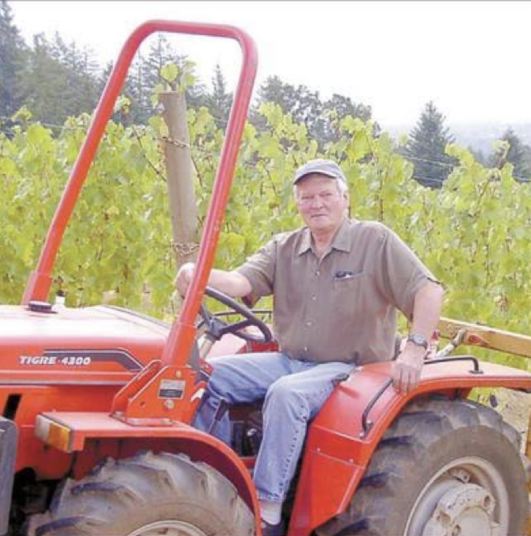 The estate vineyard, located three miles north of the Dundee Hills, consists of 12.5 acres of vines planted on a mix of sedimentary and volcanic soils. The Pinot Noir, clones 777, 115 and Pommard, are planted on Jory soils with a vine density of 1,555 per acre, with initial plantings dating to 2000 and 2001. Don is VIDON’s vineyard manager and general manager, and also assists in the winemaking along with David Bellows. Each August two or three barrels of each clone are selected for an additional seven months of barrel ageing. These become the Brigita Clone 777, Mirabelle Clone 115 and Hans Clone Pommard bottlings. All the remaining barrels are blended as the 3-Clones and this wine is about one-third of each clone. Winemaking employs indigenous primary and malolactic fermentation. Grapes are 100% de-stemmed and fermented in 1.5-ton tanks. After a 3 to 5-day cold soak and 7 to 10-day native yeast fermentation, the single clone wines are aged in French oak barrels, 35% new, for 18 months. The wines are sealed with a glass closure. There is a striking contrast between the two vintages reviewed here. The 2014 vintage wines are riper with higher alcohols and more extraction. The 2015 vintage wines are more typical of Oregon, with appealing elegance and refinement, more spice, better harmony, and less extraction but more nuanced. The tasting room at the winery is open Thursday-Monday, April through November, and other times by appointment. The tasting room features an argon gas wine preserving and dispensing system designed and built by Don. Visit www.vidonvineyard.com.
2014 VIDON Vineyard Mirabelle Clone 115 Chehalem Mountains Willamette Valley Pinot Noir 14.3% alc., $50. · Moderate garnet color in the glass. Very savory nose, with vegetal aromas along side aromas of berry compote and spice. Dark red berry and black cherry fruits are featured in this mid weight styled wine with an herbal thread in the background. A whisper of tannin, a polished mouthfeel and a sumptuous raspberry finish. Considerably more fruit expression when tasted the following day from a previously opened and re-corked bottle. Score: 90
2014 VIDON Vineyard Hans Clone Pommard Chehalem Mountains Willamette Valley Pinot Noir 14.3% alc., $50. · Moderate garnet color in the glass. Lovely perfume of cherry, floral blossom, spice and a hint of bark and white pepper. Light to mid weight in concentration in an elegant style, with a core of black cherry fruit with added cola and green dried herb flavors. Sleek in the mouth, with fine-grain tannins. Much more appealing when tasted the following day from a previously opened and re-corked bottle. Score: 89
2014 VIDON Vineyard Brigita Clone 777 Chehalem Mountains Willamette Valley Pinot Noir 14.3%% alc., $50. Release May 2018. · Moderate garnet color in the glass. Very shy and woody nose with demure added aromas of black raspberry, black cherry, spice and underbrush. Light and elegant in style, with flavors of dark berries and black cherry. Modest tannins, very modest intensity and a modest finish. Unchanged when tasted the following day from a previously opened and re-corked bottle. Score: 88
2014 VIDON Vineyard 3-Clones Estate Chehalem Mountains Willamette Valley Pinot Noir 14.5% alc., $40. · Moderate garnet color in the glass. Shy, but satisfying aromas of saucy purple and black berries with a bit of seasoned oak. The most sappy and ripest-flavored wine in the 2015 lineup but still discretely rich, with flavors of purple and black berries.The tannins are well-blended and there is enough underlying acidity to buffet the fruit load. Some oak plies the background. There is a hint of alcoholic heat on the finish (unusual for Oregon but not surprising in this very warm vintage). Score: 89
2015 VIDON Vineyard Mirabelle Clone 115 Chehalem Mountains Willamette Valley Pinot Noir 13.7% alc., pH 3.65, TA 0.55, 46 cases, $50. Release May 2018. 15th vintage from this block. Aged 18 months in French oak barrels, 35% new. Bottled unfined and unfiltered. · Light ruby red color in the glass. Aromas of cherry and floral bouquet lead to a lighter weighted wine that exudes elegance. Tasty flavors of cherry, raspberry and baking spice framed by gossamer tannins. The finish is modest but pleasing, leaving behind aromatic candied cherry and a compliment of oak. Score: 90
2015 VIDON Vineyard Hans Clone Pommard Chehalem Mountains Willamette Valley Pinot Noir 13.7% alc., pH 3.65, TA 0.55, 75 cases, $50. Release May 2018. Aged 18 months in French oak barrels, 35% new. Bottled unfined and unfiltered. · Light ruby red color in the glass. Lovely Bing cherry aromas arrive over time in the glass. Light in weight, but highly flavorful, featuring a core of perfectly ripened cherry fruit. Nicely composed, with silky tannins, energetic acidity, and noticeable finishing generosity. Score: 92
2015 VIDON Vineyard Brigita Clone 777 Chehalem Mountains Willamette Valley Pinot Noir 13.7% alc., pH 3.65, TA 0.55, 75 cases, $50. Release May 2018. Aged 18 months in French oak barrels, 35% new. Bottled unfined and unfiltered. · Moderately light garnet color in the glass. Invigorating aromas of dark red berry mix, spice and earthy flora. The most concentrated wine in the 2015 lineup, yet discreetly composed, offering mid weight flavors of dark red and purple fruits with added spice and cola notes. Thoroughly satisfying, with integrated tannins, a silken mouth feel and admirable aromatic persistence on the finish. Score: 93
2015 VIDON Vineyard 3-Clones Estate Chehalem Mountains Willamette Valley Pinot Noir 13.6% alc., pH 3.67, TA 0.55, 565 cases, $40, screw cap. Released April 2018. 40% 777, 27% 115, 33% Pommard. Aged 11 months in French oak barrels, 30% new. Bottled unfined and unfiltered. · Moderately light ruby red color in the glass. The nose leads with aromas of red berries, sandalwood and mushroom. Demure and graceful, with flavors of red cherry, strawberry and raspberry with a touch of spice. The slightest oak plies the background. Very open, with soft tannins and an unpretentious finish. My interest in the wine faded a bit when sampled over time in the glass. Score: 88
Walter Scott Wines, Salem, Willamette ValleyPartners Ken Pahlow and Erica Landon launched Walter Scott Wines commercially in 2009, and in a relatively short period of time have become one of the Willamette Valley’s most respected producers of Pinot Noir and Chardonnay. The key to their success, besides their extensive experience in the wine industry, has been their ability to source grapes from some of the most established and prestigious vineyards in the Eola-Amity Hills AVA. They have the grapes! Because of the popularity of Walter Scott wines, a limited number of tastings are offered Monday-Saturday. The tasting fee is $50 per person, waived with a 3-bottle purchase per person. Alternatively, tasting of Walter Scott wines is available at Valley Wine Merchants in Newberg. Two open house events are hosted on Memorial Day and Thanksgiving weekends when you are to join at $15 per person. Visit www.walterscottwine.com for more information and to purchase wine. The following reviewed 2016 vintage wines are part of the 2018 spring release. They all have their appeal; choosing between them boils down to “eyne-meeny-miny-moe.” The photo below shows Erica during pigeage with her daughter and spouse Ken.

2016 Walter Scott Dubay Vineyard Eola-Amity Hills Willamette Valley Pinot Noir 13.2% alc., 75 cases, $55. This is a steep, rocky vineyard farmed organically by Ryan Hannaford. Sourced from a 1-acre block yielding 1.2 tons per acre. Ambient yeast fermentation, 30% whole cluster, aged 15 months in French oak barrels, 35% new. · Moderately dark garnet color in the glass. Plenty of nuance on the nose, offering aromas of black cherry, baking spice, tobacco, earth and forest . Mid weight plus in size, featuring flavors of black raspberry, blackberry, black grape and a riff of spice. Boldly fruited with a healthy tannic backbone, but with good energy, and a long and voluptuous finish. This wine has impressive ripeness of flavor at a modest alcohol level. Score: 93
2016 Walter Scott Sojourner Vineyard Eola-Amity Hills Willamette Valley Pinot Noir 13.4% alc., 450 cases, $55. This 15-acre vineyard sits at 650 feet elevation. Clones are 115, Pommard and Wädenswil. Soils are rocky, volcanic clay with many stones littered throughout the hillside. Vineyard is farmed sustainably moving toward organic options. Ambient yeast fermentation, 30% whole cluster, aged 15 months in French oak barrels, 35% new. · Moderately dark garnet color in the glass. Earth-kissed aromas of blueberry and pomegranate with a hint of oak. Refined and suave in the mouth, with earth-dusted flavors of blueberry and black cherry. Beautifully composed, with excellent balance, and a stylish finish. Score: 93
2016 Walter Scott Sequitur Vineyard Ribbon Ridge Willamette Valley Pinot Noir 12.9% alc., 75 cases, $55. This property is adjacent Beaux Frères’ Upper Terrace Vineyard. 12 acres with 17 clones of planted Pinot Noir surrounded by a forest of Douglas Fir trees on three sides. Farmed with organic and biodynamic principles. Marine sedimentary soils. Ambient yeast fermentation, 25% whole cluster, aged 15 months in French oak barrels, 35% new. · Moderately dark garnet color in the glass. Vivacious aromas of blackberry jam, blueberry croissant, cookies-in-the-oven, fertile earth and slate. Mid weight flavors of black cherry, black raspberry and spice supported by cohesive and fine-honed tannins. The satiny texture appeals, as does the intensely aromatic and tenacious finish. Score: 93
2016 Walter Scott Temperance Hill Vineyard Eola-Amity Hills Willamette Valley Pinot Noir 13.3% alc., 125 cases, $55. This vineyard is on the crown of the Eola-Amity Hills at elevations of 600 to 900 feet. The site is exposed to cool afternoon marine breezes that contribute to late ripening. Dai Crisp has farmed the vineyard organically since 2000. 26-year-old vines. Fruit 100% de-stemmed and aged for 15 months in French oak barrels, 40% new. · Moderate garnet color in the glass. Flamboyant aromas of black cherry, exotic spices and sassafras. Stunning and succulent on the palate with far-reaching dark red cherry and berry fruit flavors. Harmonious, with a deft touch of oak, and a long, long, long finish. Ridiculous! Score: 95
2016 Walter Scott Freedom Hill Vineyard Willamette Valley Pinot Noir 13.8% alc., 225 cases, $55, silver wax cap. Vineyard planted in 1982 and farmed by the owners, Dan and Helen Dusschee and their son Dustin. Soils are Bellpine loam. Ambient yeast fermentation, 15% whole cluster, aged 15 months in French oak barrels, 35% new. · Moderately light garnet color in the glass. Brooding aromas of black raspberry, spice and compost. Very classy, with mid weight flavors of black cherry, black raspberry and intense spice. A subtle pine, forest and floral note plays alongside the core of delicious fruit. The texture is enticingly silken, and the tannins are unusually tame for this vineyard. Overall, a highly nuanced wine with impeccable balance and an intensely aromatic and spicy finish that captivates. Score: 95
2016 Walter Scott Seven Springs Vineyard Eola-Amity Hills Willamette Valley Pinot Noir 13.3% alc., 225 cases, $65. One of the few wineries to obtain grapes from this iconic vineyard. Sourced from Block B, a mixed clonal block planted selection massale in 2007. Farming is done using biodynamic practices. Ambient yeast fermentation, 20% whole cluster, aged 15 months in French oak barrels, 35% new. · Moderately light garnet color in the glass. The nose opens slowly in the glass to reveal aromas of fresh crushed berries, cherry, spice and earthy flora. The lightest and most elegant wine in the 2016 lineup, with delicate flavors of blueberry, cherry and raspberry. The wine picks up a little depth over time in the glass but never sheds a green thread. The tannins are fine grain, there is good acidity, and the wine finishes with modest intensity. Tasted repeatedly over a two-day period with no change. Score: 90
Youngberg Hill Vineyards & Inn, McMinnville, Willamette ValleyThis estate consists of 21 acres of vineyards and a guest house operating as a B&B, located on a spectacular 50-acre hilltop site with expansive views of the Willamette Valley. Family owned and operated since 2003, owner Wayne Bailey crafts the wines named after his three daughters (Natasha, Jordan and Aspen). For more information, visit www.youngberghill.com.
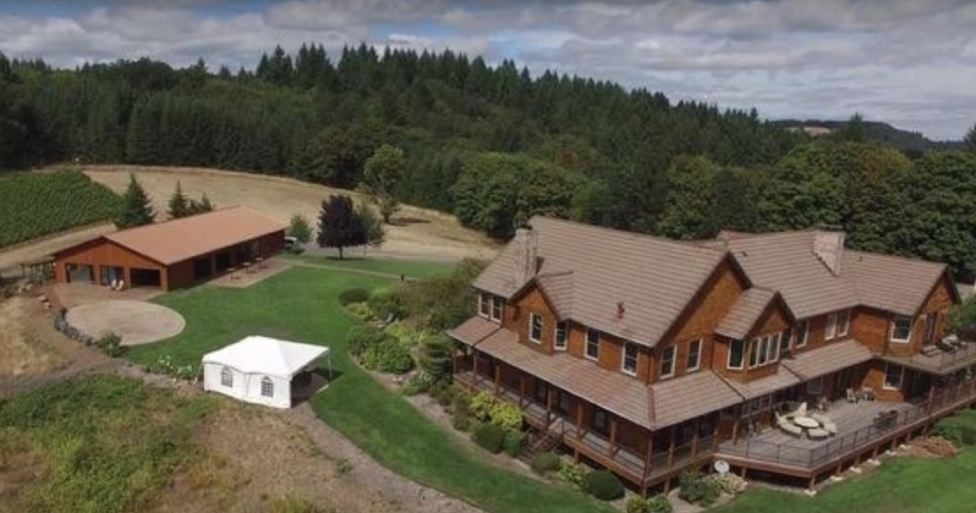
2015 Youngberg Hill Cuvée Willamette Valley Pinot Noir 14.7% alc., 286 cases, $35, screw cap. Released April 2018. Grapes from the estate vineyard (youngest vines), Bjornson Vineyard in the Eola-Amity Hills AVA, and Yamhill Valley Vineyards in the McMinnville AVA. Dijon 777. Harvest Brix 22.7º. · Moderately light garnet color in the glass. The nose offers aromas of black cherry, raspberry, toasty brioche, vanilla and walnut. The mid weight plus charge of black cherry, black raspberry and cassis flavors are intense and opulent, expansive in the mouth and carry a creamy texture through a generous finish that gives a slight notion of alcoholic warmth. The higher alcohol gives the wine body and sweetness. Score: 89
2015 Youngberg Hill Jordan McMinnville Willamette Valley Pinot Noir 13.7% alc., 448 cases, $50 . Released April 2018. The Jordan Block consists of 4 acres of estate vines situation on a steep and high slope, getting more benefit from prevailing afternoon coastal breezes. 60% Pommard and 40% Wädenswil clones. 28- year-old vines. Harvest Brix 23.3º. · Moderate garnet color in the glass. The chosen one in this vintage with invigorating aromas of fresh cherry, raspberry and earthy flora. Discretely concentrated in a mid weight style, featuring vivid flavors of black cherry and black raspberry. This amiable wine has good energy, supportive tannins, righteous oak, and a spirited finish of some length. Score: 92
2015 Youngberg Hill Natasha McMinnville Willamette Valley Pinot Noir 14.5% alc., 558 cases, $50. Released April 2018. The Natasha Block is 6.6 acres in the estate vineyard. 28-year-old vines on owned-rooted Wädenswil and Pommard clone planted in marine sedimentary soil. 40% Wädenswil and 60% Pommard. Harvest Brix 24.5º. · Moderate garnet color in the glass. The nose opens slowly in the glass to reveal effusive aromas of boysenberry and blackberry with added compliments of sweet mulch and fertile earth. In the mouthe, there is a succulent and well-ripened mid weight plus core of purple and blackberry fruits with some toasty oak in the background. The tannins are quite noticeable and surface on the mildly astringent finish that has good fruit-driven persistence. When tasted the following day from a previously opened and re-corked bottle, the tannins had softened. I would suggest decanting if you drink now. Score: 90
More Wines
2015 A to Z Wineworks The Essence of Oregon Oregon Pinot Noir 14.0% alc., $24, screw cap. A selection of fruit from 35 vineyards blended to produce a celebratory cuvée to celebrate the winery’s 15th anniversary. A to Z is Oregon’s best selling wine brand. Classy black and white bottle label and neck ring. · Moderately light garnet color in the glass. This wine evolves nicely in the glass over time and offers plenty of Pinot pleasure for a modest price. Aromas of black cherry, rhubarb, earthy flora, spice and seasoned oak barrique. A middleweight spiced black cherry core has some length and intent, there is redeeming balance, and the whole package is juicy and easy to like. Tremendous value. Score: 91
AWE Wines is a tiny label (less than 70 cases of Pinot Noir. Every year, Travis Awe, a winemaker in Healdsburg and his spouse PJ Awe drive up to the Willamette Valley and pick up the fruit, truck it back, and make the wine in Napa. The wine is sold through a mailing list at www.awewines.com.
2016 AWE Chehalem Mountains Willamette Valley Pinot Noir 12.8% alc., $50. Sourced from Olenik Vineyard planted in 1989. Volcanic soils with basalt rocks. 100% Pommard clone. Harvest Brix 23.3º. 25% whole cluster fermentation. Aged in neutral French oak barrels for 12 months. Bottled unfined and unfiltered. Tasted twice two months apart with this review based on the second tasting that was most recent. · Moderately dark garnet color in the glass. Aromas of black cherry, raspberry, savory herbs and compelling spice. Mid weight plus in style, with expansive flavors of plum, blackberry, allspice, and a whiff of leaf and stem. The fruit finds every nook and cranny in the mouth. Silken in texture, with modest tannins, and a juicy finish. The wine offers matching flavor ripeness and phenolic ripeness. More overall pleasure when tasted the following day from a previously opened and re-corked bottle. Thoroughly enjoyable now, but another 6-12 months in bottle will prove even more rewarding. Score: 93
2014 Angela Estate Yamhill-Carlton Willamette Valley Pinot Noir 13.7% alc., $36. this 34-acre vineyard was planted in 2006 to Wädenswil, 777 and 115 clones. Marine sedimentary soils. The vineyard is owned by South African wine producer Antony Beck as a gift to his wife Angela. Production of the wine is overseen by Ken Wright. · Moderately light garnet color in the glass. Aromas of berry patch, black cherry, dried herbs and damp mulch lead to a an elegantly styled, but powerfully flavored middleweight wine featuring a delicious core of black cherry fruit. Forward and giving, with impeccable balance and an intensely-aromatic, cherry-driven finish. Classic Oregon Pinot Noir to enjoy now or over the next ten years. Score: 94
2014 Child’s Play Willamette Valley Pinot Noir 13.9% alc., $24. Tendril second label featuring value-priced wines. · Moderate garnet color in the glass. Very shy black cherry fruit with overwhelming aromas of heavily toasted oak. Mid weight plus, oak-infused black cherry and blackberry fruit that isn’t particularly pleasant. Tannins show up on the dry finish. Very little Oregon Pinot Noir typicality in this wine. When tasted the following day from a previously opened and re-corked bottle, the nose was still oak-infused while the palate was a little day from a previously opened and re-corked bottle, the nose was still oak-infused while the palate was a little more redeeming with more fruit and spice coming through. Score: 86
2015 Red Electric Armstrong Vineyard Ribbon Ridge Willamette Valley Pinot Noir 14.2% alc., 120 cases, $50. Inaugural release. This wine is a collaboration between winemaker John Grochau and grape grower Douglas Ackerman. The vineyard has sedimentary soils and is meticulously farmed. Clones are Pommard, Wädenswil, and Dijon 667, 777 and 115. 20% whole cluster and native yeast fermentation. Aged 17 months in French oak barrels, 18% new. · Moderate garnet color in the glass. Pleasing aromas of black cherry and sandalwood. Mid weight flavors of black cherry and Marionberry are vibrant and easy going. Very satisfying, in a sleek and polished style with a silky texture, a hint of complimentary oak barrel seasoning, and some finishing length. Score: 93
2014 Siltstone Willamette Valley Pinot Noir 13.0% alc., $20. Produced from the Myers Family vineyards. The Myers Family owned Familys and Vinetenders farming company has been growing wine grapes in the Willamette Valley for more than 35 years. · Moderately light garnet color in the glass. Aromas of dark cherry, raspberry, earthy flora and a hint of oak. A straightforward, simple wine with mid weight flavors of black cherry and subtle oak char. Modest tannins, smoothly textured, with unassuming acidity and a short finish. Score: 87
2015 Evening Land Anden Seven Springs Estate Eola-Amity Hills Willamette Valley Pinot Noir 12.5% alc., $100. For a brief period, following the divorce of Seven Springs Estate founders Al MacDonald and Joni Weatherspoon, the Seven Springs Vineyard was cleaved in two. Joni retained the vineyard’s upper half and the name Seven Springs, while Al christened the lower portion ‘Anden,’ a linkage of their children’s names Andrew and Kristen. The lower half of the vineyard is home to the Seven Springs’ original plantings of Pommard and Wädenswil on their own roots dating to 1984. Anden Pinot Noir celebrates the oldest corner of the Seven Springs vineyard as it slowly succumbs to phylloxera. 100% whole cluster, aged in 100% new Ermitage oak barrels and bottled without filtration. · Light ruby red color in the glass. Intoxicating aromas of cherry, mulch, burnt tobacco and spice. Light to mid weight in concentration, with a generous charge of dark red cherry fruit. Hints of tobacco, earth, toast and vegetation add interest. Elegantly composed and silky in the mouth, with imperceptible tannins and an extremely long finish reflecting the pedigree of the vines. This wine won’t bowl you over with sap, but it will seduce you with nuance. As the winery announcement said, “A subdued and timeless interpretation of Pinot Noir ….and a celebration of the finite time these vines have left.” Score: 96
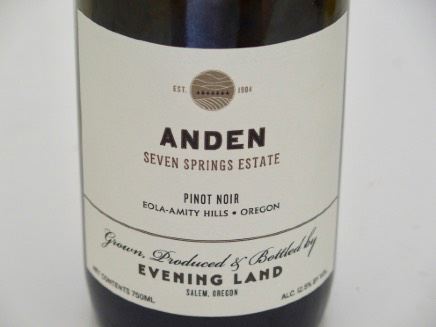
Diversity of Styles Popularize Pinot Noir RoséOk, I get it. You don’t want to hear about a long-winded dissertation on domestic Pinot Noir rosé. It isn’t really a serious wine, you say, and rarely reviewed and scored in the wine press. But, picture yourself sitting at your home patio when it is 95º F outside, and you are thinking about a refreshing drink. Sure, you could reach for a cold beer and no one would dispute that choice, but if you want wine, are you going to reach for a 14.5%+ alcohol Pinot Noir at 63ºF or a nicely chilled 13.5% Pinot Noir Rosé at 52ºF? That said, Pinot Noir rosé is not just for hot weather.
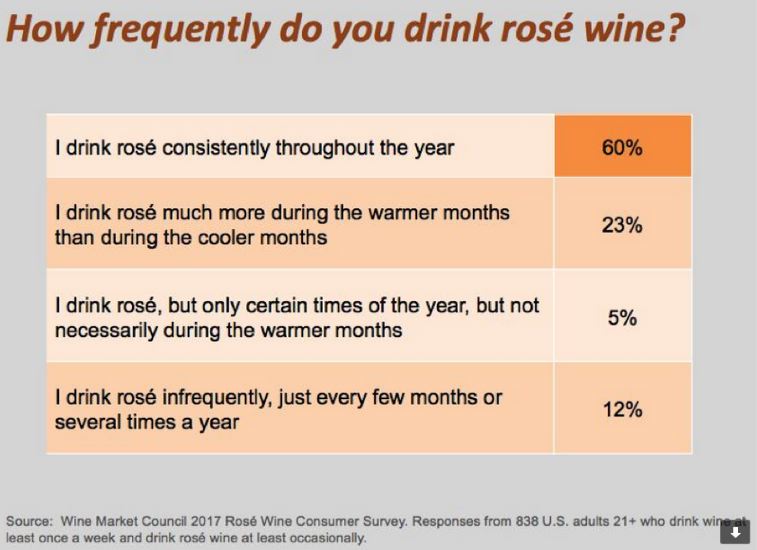 According to a report from Nielsen in 2017, rosé wine of all types only represents 1.5% of the total table wine category, yet it is growing in popularity at a rate of an 53% increase in volume sales over the previous year compared to the overall table wine category that is growing at 4%. Younger woman are particularly attracted to rosés, but its appeal is spreading across both sexes. Let’s be honest. Pinot Noir rosé is an eligible, unadorned wine that is easy to like. Do not consider it a singular wine for It comes in a wide diversity of styles.
Here is some very practical information about rosés: 1 The palate of colors of Pinot Noir rosé is glorious, ranging from delicate apricot to pink to bright red rose. 2 Rosé wine can be made from any red grape variety, but Pinot Noir has enjoyed more widespread use in California and Oregon due to its current popularity. 3 Most domestic Pinot Noir rosés are produced by lightly crushing the grapes, chilling them, and cold macerating them for up to 48 hours. The juice is drained off and fermented in stainless steel in a manner similar to the production of white wine. A second method, or saignée, eliminates the cold soak. After the crushed grapes are put into a fermentation tank, the color is checked periodically and the free-run juice is drained or bled off to finish fermentation in a separate tank. There is usually little to no residual sugar in either case. Neutral oak may also be used in the production process. Rosé production is largely winemaker-driven leading to a diverse stylistic interpretation. 4 The best Pinot Noir rosés are those made from grapes purposely grown for rosé production and there is serious intent to make a fine wine. 5 Since Pinot Noir rosé sells for significantly less than still Pinot Noir, and because Pinot Noir grapes are expensive and thus are not a profitable bottling, most wineries only produce around a hundred cases annually. They often sell out by early May. Expect to pay around $22 although the best examples can exceed this amount. Most often, the wines are bottled with screw caps making them ideal picnic companions. 6 Retailers such as markets only carry a limited number of domestic Pinot Noir rosés because tiny production limits distribution. The best way to acquire distinctive Pinot Noir rosé wines is directly through your favorite Pinot Noir producers. Pay attention to the vintage on the label when you visit markets and other retailers, since those sellers may be still stocking bottles of rosé wine that are a year or even two years old. 7 Pinot Noir rosé wines are usually released in the spring following the previous vintage and meant to be drunk when fresh in the spring or summer of the year of purchase. 8 When you are dining out, Pinot Noir rosé will often offer the best price-quality ratio on the wine list and will compliment many of the foods that you and your co-diners are enjoying. Pinot Noir rosé is simply one of the world’s most versatile food companions. 9 The flavors of Pinot Noir rosé can vary greatly depending on the amount of skin contact, but generally, you will discover blood orange, strawberry, peach, watermelon, herbs and spice. I have found considerable nuance in Pinot Noir rosé if you look for it, but these are not wines to contemplate. With essentially no fruit (skin) or oak tannin, the wines go down easily. 10 Pinot Noir rosé must be chilled for best enjoyment as is recommended for sparkling wine, and even using ice cubes like the French do is not out of the question. 11 Domestic Pinot Noir rosés are vinified in a wide variety of styles, varying from delicately fruited and tinted, to moderately extracted and darker colored. They may be bone dry or contain some residual sugar (RS). 12 Rosé wines come in all shapes of bottles, even square. They are also often available in magnum or double magnum format making them an inexpensive, but impressively generous offering, at parties. A few domestic Pinot Noir rosé wines from Oregon and California are reviewed as well as two popular French rosé wines (not made from Pinot Noir) that are in widespread retail distribution. Domestic versions usually have more fruit aroma and fruit expression and higher ABV. Pinot Noir Rosé wines are not often submitted for review because the Pinot cognoscenti know to buy these bargain wines each year and reviews are not usually required by wineries to generate sales. Remember, my scores are relative to other rosé wines and not comparable to regular Pinot Noir wines. One interesting observation. I re-tasted the Oregon Pinot Noir rosé wines at room temperature (about 65ºF) the following day after they had been opened and re-closed. I was surprised that I thoroughly enjoyed all the wines and some of them were actually better when tasted chilled the day before. My point is, you can drink good examples of Pinot Noir rosé at a cool, but not chilled temperature, and you could even decant the more robust examples (gasp!).
California
2017 Alma de Cattleya Sonoma County Rosé of Pinot Noir 14.1% alc., pH 3.32, TA 0.57, 560 cases, $20. DIAM cork closure. Both whole cluster pressed and saignée method. Fruit harvested especially for this wine. Inoculated with a selection of French yeasts, no malolactic fermentation. Aged six months in the cellar before bottling. · Moderate pink coral color in the glass. Engaging aromas of orange peel, strawberry, red cherry and white flower blossom. Mid weight flavors of orange, red berry, pear, white peach and eucalyptus. Slightly creamy on the palate, with a thirst-quenching finish. Score: 91
Note: The Alma de Cattleya wines are value-priced offerings (less than $25) complimenting the premium Cattleya wines. The Alma de Cattleya label website should be “live” by the end of May. To order now, visit the Cattleya website at www.cattleyawines.com. You can find out about all wines winemaker Bibiana Gonzales Rave is involved with at www.bibianagrp.com. She was named the 2015 “Winemaker of the Year” by the San Francisco Chronicle.
2017 Baileyana Edna Valley Rosé of Pinot Noir 13.8% alc., $24, screw cap. Dijon and heritage clones planted in volcanic soils with marine deposits and clay loam at Firepeak Vineyard, a SIP Certified Sustainable site. · Moderately light pink coral color in the glass. Effusive aromas of fresh strawberry, white peach and white flower blossom. Discrete richness of peach, nectarine, strawberry and spice flavors with an arrow of acidity and a lip-smacking finish of note. Score: 92
2017 Belle Glos Oeil De Perdrix Sonoma County Pinot Noir Blanc 13.1% alc., $25, screw cap. The name translates to “Eye of the Partridge” in French. Whole grape clusters were lightly pressed with brief contact with French oak barrels during and after fermentation. · Moderate pink coral color in the glass. Primarily aromas of garden soil and toast with only the slightest hint of red berries. A distinctive wine apart from the usual rosé genre with flavors of blood orange, crushed strawberry, yellow peach, pear and toasty oak. Lacks the fresh, glorious fruit aromas and flavors usually found in rosé, and veers more toward a Pinot Noir Blanc profile as the name implies. Score: 87
2017 Tongue Dancer Sonoma Coast Rosé of Pinot Noir 13.5% alc., pH 3.29, TA 0.64, RS 0.5g/L, 220 cases, $25. Released March 8, 2018. Classy package with a tall, stately bottle and a pink wax cap. A saignée blend from a selection of three Sonoma Coast vineyards. 2-day skin contact. Fermented and aged in stainless steel. Inoculated with a yeast from the Bandol region of France. Partial malolactic fermentation. · Moderate pink color in the glass. Seductive aromas of strawberry preserves, blood orange and Chanel No 5. Delightful flavors of strawberry, orange, and savory dried herbs. The slightest tannins add sustenance, the acidity lends crispness and the overall impression is one of harmony. Score: 92
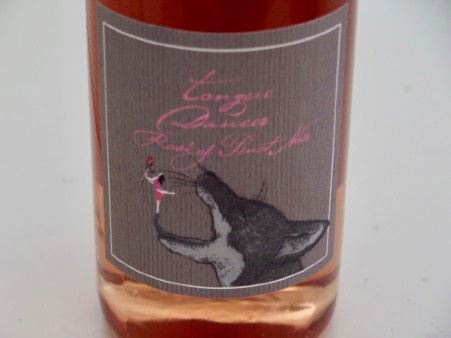
Willamette Valley, Oregon The 2017 vintage was different than the preceding warm five years, being reminiscent of the 2010 and 2011 vintages. Winter was cold with snow extending into a cool spring and delaying bud break by a few weeks into April and bloom following in late June. Summer was dry and warm, but there were grey skies from fires in the north and east. The Willamette Valley was spared any effect from the smoke. There were some stretches of extreme heat in late July and early August which threatened sunburn damage, although the grey skies from the fires ameliorated this to some degree. Set was large, so judicious fruit thinning was necessary to maintain quality. Rains arrived in mid-September which slowed ripening. I was surprised to find that several of the Pinot Noir rosé wines had significant depth of color, noticeably bold fruit concentration and relative high alcohol. If you closed your eyes and tasted the wine blind, you would think you were drinking a traditional Pinot Noir wine rather than a Pinot Noir rosé. The color of the wines was a giveaway as to the character of the wine in the bottle. Darker colored wines tended to be riper, more fruit driven, with more body and slightly less acidity. The lighter colored wines were more restrained, more savory, with more refreshing acidity, and more affinity to the popular Provence style of rosé. This is the style of rosé I prefer and my scores reflect this.
2017 Alexana Willamette Valley Rosé of Pinot Noir 14.1% alc., RS 1.15 g/L, $32. Whole cluster pressed after picking with no skin to juice contact, then fermented and barrel aged in 100% neutral French oak barrels for 4 months. · Light apricot color in the glass. Nicely perfumed with scents of strawberry orange peel, floral blossom and a hint of puff pastry. Excellent palate-chasing flavors of nectarine, apricot, strawberry and blood orange in a crisp, refreshing and uplifting style. Hits all the right notes for a Pinot Noir rosé. Score: 93
2017 Anam Cara Cellars Chehalem Mountains Rosé of Pinot Noir 14.2% alc., 110 cases, $22, screw cap. Dijon 114 from Nicholas Vineyard. This clone is grown in the coolest part of the vineyard and was a benefit in this relatively hot vintage. Fermented on skins for two days. · Moderate ruby red color in the glass (the color predicts what is to follow). Substantial aromas of strawberry, red cherry, nectarine and a hint of dried herbs. Very fruity, with mid weight flavors of Damsel plum, cranberry, and yellow peach. Very slight tannins with balancing acidity. Luscious for a rosé, and will stand up to hearty and savory foods. Score: 90
2017 A Blooming Hill Vineyard Willamette Valley Rosé of Pinot Noir 13.0% alc.,100 cases, RS 2.3 g/L, $19. Release May 2018. · Moderate pinkish-red color in the glass. Leading off are aromas of watermelon, red apple and herbs Quite flavorful, featuring mid weight flavors of raspberry, strawberry and orange with the slightest salinity. A“big boy” rosé veering to a regular Pinot Noir in extraction, yet enough acidity to offer the refreshing character of a rosé. Finishes with some length and generosity. Score: 90
2017 Denison Cellars Kiff Vineyard Yamhill-Carlton Willamette Valley Rosé of Pinot Noir 13.5% alc., pH 3.47, TA 0.61, 101 cases, RS 5.4 g/L, $22, screw cap. 62% Pommard and 38% 777. Harvest Brix 23.5. This wine was produced from fruit harvested specifically for rosé about two-thirds through harvest from younger blocks at Kiff Vineyard.. Fruit was de-stemmed, cold soaked for 7 days, then pressed directly to stainless steel tank for a 6-week fermentation completed under cool conditions, followed by aging. · The extended skin contact produced a moderately light ruby red color in the glass. Aromas of strawberry, citrus and savory herbs. Appealing flavors of strawberry, ripe cherry, raspberry and spice with a bit of garrigue. Veers to a traditional Pinot Noir, with moderately robust intensity of flavor, but offers the typical refreshing acidity and vibrant finish of a rosé. Score: 92
2017 Kramer Vineyards Yamhill-Carlton Willamette Valley Rosé of Pinot Noir 13.4% alc., pH 3.35, TA 0.63, RS 0.2 g/L, 100 cases, $22. Released April 13,2018. Estate grapes planted in the late 1980s. Harvest Brix 21.7º. Grapes de-stemmed into 1.5-ton fermenter and pressed after six days. Racked to tank for primary fermentation and aged on fine lees for 5 months prior to bottling. · Moderate pinkish-red color in the glass. Really enticing aromas of fresh red berries and rose petal. Juicy flavors of strawberry, cherry, blood orange and spice . Excellent grip, silky on the palate, with a pleasing gift of aromatic fruit on the bracing, dry finish. Score: 92

2017 Marshall Davis Yamhill-Carlton Willamette Valley Pinot Noir Rosé 13.0% alc., pH 3.64, TA 0.56, RS 4.9 g/L, 100 cases, $23, screw cap. Clone 114 from Marshall Davis Estate Vineyard. · Light pink color in the glass. A bit shy with aromas of white stone fruits, red berries, stem and bruised apple. Flavors of strawberry, raspberry, cranberry and spice. Medium bodied with noticeable sweetness on the juicy finish. Score: 88
2017 MonksGate Vineyard North Block Yamhill-Carlton Willamette Valley Dry Rosé of Pinot Noir 13.1% alc., pH 3.09, 118 cases, RS 0 g/L, $21, screw cap. Pommard clone. Minimal skin contact. · Delicate golden-pink color in the glass. Really magnetic nose showing aromas of strawberry, spice garrigue, brioche and floral goodness. A highly distinctive rosé, with flavors of strawberry, white peach, melon, and hints of caramel and goodness.. Creamy in the mouth with an excellent finishing grip of acidity. Score: 92
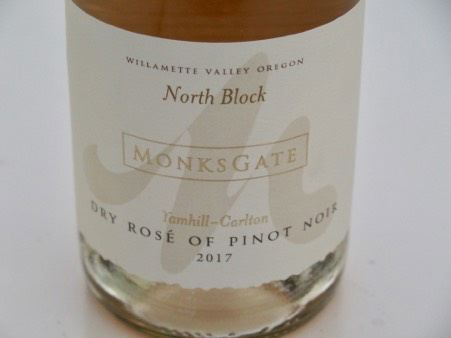
2017 Ponzi Vineyards Willamette Valley Pinot Noir Rosé 13.0% alc., pH 3.29, RS 3.0 g/L, $23, screw cap. 24-hour maceration after de-stemming and pressed to stainless steel for a cool fermentation. Malolactic fermentation inhibited. A portion was fermented in neutral French oak barrels and allowed to complete malolactic to add a touch of creaminess to the mid palate. · Moderate coral pink color in the glass. Welcoming aromas of red berry, rose and seasoned barrique. Pleasingly dry with bright acidity, offering flavors of strawberry and blood orange. Score: 89
2017 R. Stuart & Co. Love, Oregon Willamette Valley Pinot Noir Rosé 12.1% alc., pH 3.29, TA 0.72, RS 0.11g/L, 184 cases, $22. Sourced from Hirschy, Courting Hill and Menefee vineyards using the second crop. Grapes loaded whole cluster into the press, rolling it gently to break up some of the grapes. Maceration proceeded for an hour. Then pressed the juice off and fermented 7 days in neutral French oak barrels. After fermentation, the wine was aged another 28 days. · Moderately light pink in color. Shy aromas of crushed red berries, apple, rose petal and a hint of ginger. Light in weight and lean, with flavors of red berry, orange and herbs, finishing with a tart, strawberry-infused finish. A delicate, acid-driven style. Score: 89
2017 Saffron Fields Yamhill-Carlton Willamette Valley Rosé of Pinot Noir 14.1% alc., 175 cases, RS 0 g/ L, $30. Sourced from Saffron Fields Vineyard. 72-hour skin contact, stainless steel fermentation. Winemaker Tony Rynders. · Moderately light ruby red color in the glass. Aromas of strawberry reduction sauce and flower garden. Mid weight flavors of dark red cherry, melon, spice, mocha and edible flower. A hearty rosé with generous ripeness and a hint of oak seasoning. Score: 90
2017 Van Duzer Willamette Valley Pinot Noir Rosé 13.1% alc., $20, screw cap. · Moderately light pink color in the glass. Gracious aromas of strawberry, pink rose, orange peel, tropical fruit and a hint of oak and herbs. Beautifully crafted in a Provence style, with flavors of red berry, apricot and orange flower water. Impeccably balanced with tantalizing acidity and a sleek finish . Highly enjoyable and consistently one of Oregon’s best Pinot Noir rosés. Score: 93
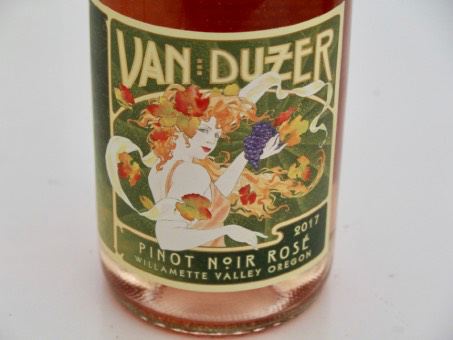
2017 Willamette Valley Vineyards Whole Cluster Willamette Valley Rosé of Pinot Noir 13.5% alc., pH 3.30, TA 0.674, 3,936 cases, $18. Harvest Brix 20.4º-22.0º. Clones 114, 115, 667, 777, Pommard and Wädenswil. Soft gravity pressing from weigh of whole clusters. 24 hours of skin contact. Saignée into stainless steel tanks while the remaining whole clusters are left behind in the vessel to ferment and become the winery’s Whole Cluster Pinot Noir. The rosé juice is fermented cold in stainless steel. The wine is then split into three tanks and one tank is kept on its lees while the other two are racked off the lees. · Moderate pink color in the glass. Bright aromas of fresh strawberry, candy apple and raspberry. Showy flavors of strawberry, blood orange and guava with a subtle sweetness. A boisterous, fruity style with balanced acidity and some finishing length. Score: 92
2017 Winderlea Dundee Hills Rosé of Pinot Noir 13.2% alc., pH 3.32, TA 0.62, 325 cases, $30. Sourced from Winderlea Vineyard (55% clone 777) and Weber Vineyard (45% Pommard). Aged 4 months in neutral French oak barrels following un-inoculated fermentation. · Moderately light pink in color in the glass. Delicate aromas of red berry, blood orange, nutmeg, and orange flower water. Crisp, bright and clean, with demure, but satisfying flavors of strawberry, apple and herbs. More Provence in style combining both fruit and savory characters. Score: 91
2017 Winter’s Hill Dundee Hills Willamette Valley Rosé of Pinot Noir 13.5% alc., 185 cases, $22. Grapes are crushed after picking and rest on the skins for a short time, then gently pressed into neutral French oak barrels for fermentation and 6 months aging. · Moderate pinkish-red color in the glass. Aromas of red cherry, strawberry, underbrush and a hint of toasty oak. Somewhat akin to a regular Pinot Noir, with mid weight flavors of cherry, red berry, dried herbs, blood orange and a hint of ginger, along with a lush mouthfeel. The fruit is striking. Score: 91
Provence, France
2016 Chateau D’Esclans Rock Angel Côtes De Provence, Provence, France Rosé 13.5% alc., $35. A.O.P. Côtes de Provence. Imported by Shaw-Ross International Importers. Winery also produces the popular Whispering Angel Rosé. Primarily Grenache and Vermentino. De-stemmed and slightly crushed, using free run juice and first slight pressing with no maceration. Both free run juice and pressed juice partially vinified in demimuids (600L barrels) and stainless steel. · Light apricot color in the glass. Leading off are aromas of strawberry, yellow apple, and graphite. Discreetly concentrated flavors of nectarine, red fruits, papaya, honey, pineapple and spice. Silken in texture, with a delicate touch of oak in the background. Score: 91
2016 Miraval Côtes de Provence, Provence, France Rosé 13.0% alc., $26 (but available for $20 at discount retailers). A.O.P. Côtes de Provence. Imported by Vineyard Brands. Property owned by Brad Pitt and Angelina Jolie along with the Perrin family of Châteauneuf-du-Pape. Some jokingly call this wine “Brangelina Rosé.” The 2017 vintage has been released but may not be in retailers yet. Cinsault, Grenache, Syrah and Rolle. Grapes de-stemmed, vinified in temperature-controlled stainless steel vats and in barrels (5%) with lees stirring. · Delicate pink color in the glass. Demure, but pleasant aromas of blood orange, strawberry, and spring rose. Gracious and crisp on the palate, with lighter-weighted flavors of apricot, red cherry and berry and spice imbued with bright acidity. Score: 90
Experience Rosé (formerly Rosé Today) is a promoter of experiences to people who like rosé. Two new consumer events will be held in June and October. On Saturday, June 16, 2018, The Great Rosé Pairing for Summer will take place at The CIA at Copia in Napa. Attendees will be able to sample wines from the Experience Rosé: The 2018 Competition held in April. Gourmet foods will be paired with rosé wines from California, France, Italy and Spain. On Friday, October 19, The Great Rosé Pairing for Thanksgiving will feature rosé wines produced in the Hopland and Redwood Valley regions of Mendocino County. Held at the Jaxon Keyes Winery, a selection of seasonally-inspired bites will be paired with rosé wines suitable for holiday dinners and celebrations. To obtain further information or to purchase tickets visit wwww.experiencerose.com. Legendary Rosé Cruise Returns to New York La Nuit En Rosé will be held May 18 and 19, 2018 on the Hudson River aboard the Hornblower Infinity yacht. The even features 100+ rosé wines from around the world, a two-hour cruise, snacks, VIP lounge and live entertainment. More information and tickets at www.nuitrose.com. National Rosé Day is Saturday, June 9, 2018.For events: https://www.roseallday.com/event-calendar/nationalrose- day-2018.
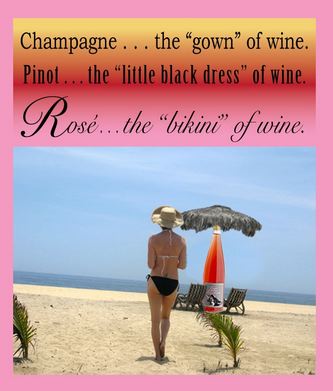
Oregon “Tweener” Style Chardonnay RisingI recently came across an interesting article on Chardonnay titled, “Most Wine Drinkers Don’t Really Understand Chardonnay,” written by Courtney Schiessl for Forbes website: https://www.forbes.com/sites/courtneyschiessl/2018/04/17/real-chardonnay-taste/#8f5805c49714. Schiessl correctly points out that Chardonnay is neutral in character and doesn’t really fit the perception that it is a full-bodied, fruit-forward wine with buttery, rich flavors, the so-called New World (think California) interpretation. The truth is, as she notes, is that most of the aromas and flavors commonly associated with Chardonnay actually come from the vinification process and not the grape itself. Malolactic fermentation adds buttery character and oak aging adds notes of brioche, nuts, caramel and spice. If one is seeking Chardonnay that is less adorned and acid-driven. Schiessl points to Chablis and the Côte d’Or for sources. Of course, the Sta. Rita Hills, Santa Cruz Mountains, and Sonoma Coast offer very cool climates ideal for more restrained or unplugged versions of Chardonnay. ,p> Schiessl says, and rightly so, “Look to Oregon, especially the Willamette Valley, for a great balance of rich texture and fine acidity.” I agree, and the reviews to follow of Willamette Valley Chardonnay may be just the right compromise between the “New World” and “Old World” style of Chardonnay, a “tweener” style that you have been seeking.
2016 Big Table Farm Willamette Valley Chardonnay 13.3% alc., 910 cases, $45. Released March 5, 2018. Barrel fermented in French oak barrels (10% new) with ambient yeast and bottled after 11 months of aging. Unfined and unfiltered. · Light golden yellow color in the glass with a slight haze. Aromas of lemon, cold steel and sawdust lead to a spirited wine with flavors of lemon creme, honey and yellow apple. There is noticeable oak input, but in a good way. The finish has some persistence and is highly refreshing. Score: 92
2015 Lundeen Articulate Willamette Valley Chardonnay 13.0% alc., pH 3.25, 105 cases, $30. Released February 1, 2018. Sourced from Bunker Hill Vineyard. 5-week primary fermentation, followed by full malolactic fermentation. Lees stirred weekly for the first six weeks. Aged in one new and three neutral French oak barrels. · Moderate golden yellow color in the glass. The nose offers aromas of lemon creme, pineapple, pastry creme and nutty oak. Flavors of green apple, lime and white peach with a herbal note. Very grippy acidity, with a soprano finish. Score: 88
2014 Lundeen Bunker Hill Vineyard Willamette Valley Chardonnay 12.6% alc., pH 3.22, 102 cases, $30. Released September 1, 2016. Grapes are from a 5-acre vineyard located in the south Salem hills and planted exclusively to Chardonnay. Soils are volcanic Nekia in type. 4-5 week fermentation, lees stirred weekly for the first three months, full malolactic fermentation. Aged in one new and four neutral French oak barrels. · Moderate golden yellow color in the glass. Aromas of green apple, citrus, yeast and nut butter. Spirited flavors of lemon-lime, and Honeycrisp apple. Somewhat austere, yet bright and appealing, with a round, silken mouthfeel, powdery tannins and a refreshingly crisp finish. Score: 90
2016 Youngberg Hill Aspen McMinnville Willamette Valley Chardonnay 12.9% alc., RS 0, 336 cases, $40, screw cap. Release July 18, 2018. Clones 75, 76, 95 and 548 planted in uplifted marine sedimentary soil (Willakenzie). Vine age 10 years. Harvest Brix 21.1º. Barrel fermented in once-used French oak barrels for 6 months. Full malolactic fermentation. · Light golden yellow color in the glass. The nose arrives over time in the glass, offering uplifting aromas of green apple, straw, wax, per and buttery brioche. Clean and crisp with enviable vibrancy in the glass, displaying flavors of green apple, lemon, yellow grapefruit and poached pear. An acid-driven style, yet quite flavorful with a bright and steely finish. Score: 93
2016 Walter Scott Cuvée Anne Willamette Valley Chardonnay 13.1% alc., 390 cases, $40. A blend of the winery’s best vineyard sites, including Freedom Hill, X Novo, Sojourner and Vojtilla vineyards. It is a reserve blend that reflects the winemaker’s vision of a Willamette Valley Chardonnay. Fermented with ambient yeast with minimal lees stirring and aging in a mix of new and neutral 500L and 350L French oak barrels for 12 months. The wine was racked and blended to stainless steel for an additional 3 months prior to bottling. · Light golden yellow color in the glass. A complex nose proves interesting over time, offering aromas of lemon peel, grilled peach, honey, toasty brioche, vanillin, nutty oak and a little reductive flint. The flavors replicate the aromas, with added notes of yellow grapefruit, yellow peach, pear and yeast with a subtle backdrop of toasty oak. The wine improves as it warms in the glass. The sleek, seamless texture appeals, as does the juicy, flinty finish. Score: 91
2016 Walter Scott Freedom Hill Vineyard Willamette Valley Chardonnay 176 cases, $55. The vineyard owners have been growing Chardonnay here since 1981. Vineyard is farmed sustainably and moving toward organic options. Fermented with ambient yeast and minimal lees stirring. Aged in one new 500L puncheon, a once-filled puncheon and a neutral puncheon for 12 months. The was racked and blended to stainless steel for an additional 3 months before bottling. · Light golden yellow color in the glass. A social wine with lingering aromas of lemon, poached pear, and toasted bread. The flavors of lemon-lime, green apple, honey, pear and field greens are bright and clear and married with sensible oak. The wine’s notable “minerality” gives the wine a crystalline character. Slightly creamy in the mouth, with a hint of tannin, and a very dry and mouthwatering finish of some length. Score: 93
2016 Walter Scott X Novo Vineyard Eola-Amity Hills Willamette Valley Chardonnay 275 cases, $65. Craig and Robin Williams began planting this vineyard in 2010. Remarkably, the vineyard contains a plethora of different clones, and the block that Walter Scott works with has at least fifteen clones planted. It is a very unique site farmed impeccably by Stirling Fox. Fermented with ambient yeast and minimal lees stirring. Aged in a mix of new and neutral 500L and 350L French oak barrels for 12 months. Finally, the wine is racked and blended to stainless steel for an additional 3 months prior to bottling. · Moderately light golden yellow color in the glass. This wine offers most everything you could want in a Chardonnay. Bright aromas of green apple, lemon, baking spice, bread in the oven and waffle. There is a little more body here, a little more creaminess in the texture, and a little more seductive flavors of lemon, pear, spice, and toast. The sprightliness of the fruit, the impeccably integrated acidity, the viscous palate feel, and the remarkable finish that hangs around for encores combine to produce a sensual wine that demands contemplation. Score: 95
 Other Oregon producers of exceptional Chardonnay to consider: The Eyrie Vineyards, LUMOS, Lingua Franca, Evening Land, and Bergström. Read more about Oregon Chardonnay: www.sevenfifty.com/willamette-chardonnays-find-a-new-niche/.
Pinot BriefsPinot in the City On May 15, 2018, 70 wineries from Oregon’s Willamette Valley are heading to Chicago for Pinot in the City. The evening tasting at Morgan Manufacturing is from 6:30 p.m. to 9:00 p.m. VIP access begins at 5:30 p.m. Owners and winemakers will be pouring a selection of both current releases and library wines, including Pinot Noir, Pinot Gris, Pinot Blanc, Chardonnay and sparkling wines. A trade tasting will be held the same day. More information at wwww.willamettewines.com/event/pinot-in-the-city/.Tickets at www.eventbrite.com/e/pinot-in-the-city-chicago-tickets-42600730933?.
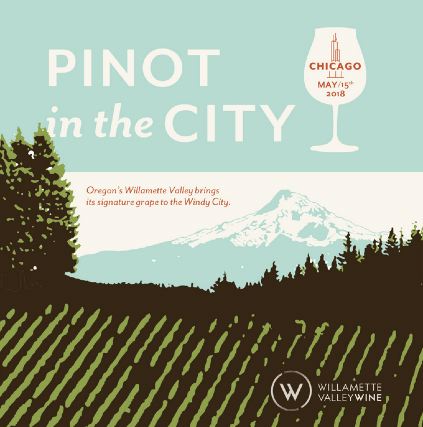 Taste of Sonoma Superb local wines and outstanding chefs at the Taste of Sonoma, September 1, 2018, at Green Music Center at Sonoma State University. Exclusive pre-sale tickets now available featuring ticket discounts and special benefits for Visa Signature® and Visa Infinite® cardholders. General admission sales open May 14, 2018. Visit www.TasteofSonoma.com. Record-Breaking Sonoma County Barrel Auction A record-setting $840,700 was raised at the Fourth Annual Sonoma County Barrel Auction at MacMurray Vineyards, April 20, 2018, attended by a crowd of 500 trade people. The top-earning lot of the day and the top-selling red wine lot was one of two special 20- case “Sonoma Rising” barrel lots benefitting the Sonoma County Vintners Emergency Relief Fund. 2017 Sonoma Rising “Resilience,” produced with fruit from the Russian River Valley and Sonoma Coast and crafted by winemakers at AldenAlli, Arista Winery, Benovia Winery and Williams Selyem, was sold for $70,000 ($3,500 per case). 2017 “A Perfect Pair” Sonoma Coast Pinot Noir, made by winemakers at Benovia Winery and AldenAlli, fetched $2,600 per case. North Coast Wine & Food Festival The 2018 Press Democrat North Coast Wine & Food Festival will be held Saturday, June 9, 2018, at SOMO Village in Rohnert Park. The event features the top wines from the Press Democrat North Coast Wine Challenge. VIP tickets $135 per person, tasting $95 per person. 90 Gold Medal Wines, 18 iconic wine country chefs, music, and ongoing programs hosted by celebrity chef John Ash. Visit www.nothcoastwineandfood.com. Antica Terra + Lillian Announce 2018 Vineyard Lunch Series Lunch will be served from 12:00 p.m. to 3:00 p.m. under old oak trees, among the vines of the Antica Terra Estate Vineyard. Chef Timothy Wastell will prepare the meal accompanied by a thoughtful curation of wines. Only ten seats at the table for each date: July 14 and 21, August 8, 11 and 25, and September 9. Tickets will be available to mailing list members on April 24 at a pre-sale price of $100 per person. Sales will be open to the general public on May 1 at $125 per person. For inquiries, contact Miranda Bradeen at mb@anticaterra.com. Red Car Winery Owner & Winemaker Carroll Kemp Moves to Alma Fria Almost twenty years ago, Carroll left his producing career in Hollywood and became a winemaker. He founded Red Car along with his good friend Mark Estrin and investors. Mark passed away tragically in 2005, a year after the pair became full-time Red Car employees. In 2010, Carroll relocated Red Car to Western Sonoma County to focus on the kind of Pinot Noir and Chardonnay that enthralled him. He was able to grow almost all the fruit used in the Red Car wines. Although Red Car became highly successful, Carroll found another chapter beckoning. He is joining with a good friend, Jan Holtermann, who founded Alma Fria, a producer of Pinot and Chardonnay from West Sonoma Coast vineyards. Jan and Carroll discovered a vineyard near Annapolis and the vines there are now known as the Holtermann Vineyard, the winery’s estate vineyard. Jan invited Carroll to make Alma Fria’s wines from the inception. Today, Carroll is Jan’s partner and Alma Fria is Carroll’s future. Alma Fria wines have been reviewed very favorably in the past: www.princeofpinot.com/winery/2424/.
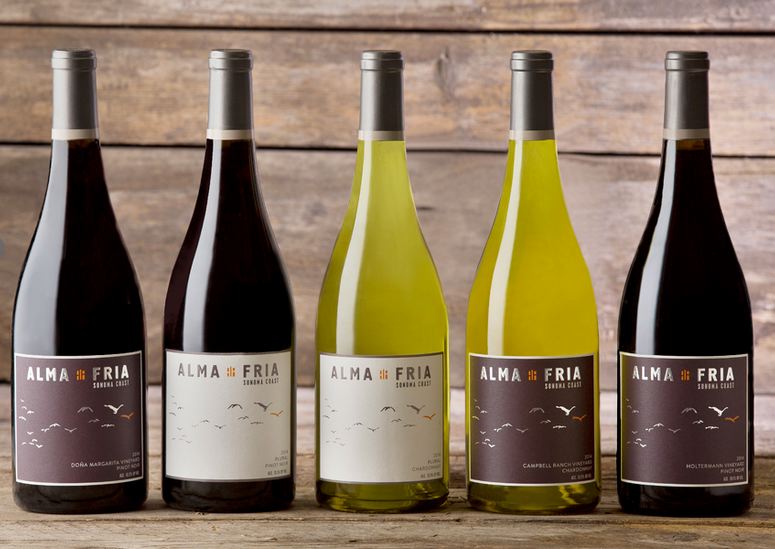 Book on Robert Lawrence Balzer Christine Graham, a Contributing Editor to The Underground Wineletter has just published a book on wine icon Robert Lawrence Balzer, Hollywood and Wine - A Star- Studded Life: The Robert Lawrence Balzer Story. Balzer had been working on his autobiography prior to his death at age 98 in 2011. Graham agreed to complete the book, relying on his copious notes, articles, books and journals. Balzer was a 20th Century Renaissance man: Hollywood celebrity, Buddhist monk, fancy grocer, wine educator, bon vivant, restaurateur, chef, actor, author, pilot, poet, painter, photographer, dancer, world traveler, philanthropist, radio personality and visionary. Some of his closest friends included President Ronald Reagan, Robert Mondavi, Greta Garbo, Wolfgang Puck, Paul Bocuse, Lalou Bize Leroy, and Claude Taittinger. The book includes photographs of both the early days of Hollywood and the early days of the California wine industry. The books is available on Amazon as a Kindle ebook. Burgundy Documentary Debuts ‘Three Days of Glory’ is a full-length documentary film about the greatest wine events, in the most storied region, during the most difficult year of 2016. The film, by Scott Wright of Caveau Selections (importers of Burgundy and grower Champagne based in Portland, Oregon), and filmmaker David Baker, was filmed on location in Burgundy, taking the viewer through the frost-ravaged 2016 vintage through the eyes of the vignerons who lived it. The film provides a true insider’s look into Burgundy, featuring Veronique Drouhin, Dominique Lafon, Caroline Parent-Gros, Aubert De Villaine and Allen Meadows. For the first time ever on film, viewers will see the behind-the-scenes workings of the famous celebrations La Paulée de Meursault, the Hospices de Beaune auction, and the feast of the Confrèrie des Chevaliers du Tastevin at the Chateau de Vougeot, as well as the harsh economic realities and climate change challenges facing one of the world’s great treasures. The World Premiere will be Sunday, April 29, as part of the Newport Beach Film Festival and the Napa Valley Premiere will be the following day in St. Helena. Further showings are planned, including the Nice International Film Festival in France. UPDATE: I attended the World Premiere on April 29. The movie is captivating and tugs at the heart as the challenges facing Burgundy’s continuing existence are revealed. Interviews with notable vignerons and Allen Meadows are poignant and insightful. More about the documentary at www.threedaysofglory.com. Also, visit Caveau Selections at www.caveauselections.com. Although you may associate Burgundy and Champagne with out-of-reach prices, most of Scott Wright’s offerings are carefully vetted and focus on the affordable range of $24-$75 per bottle.
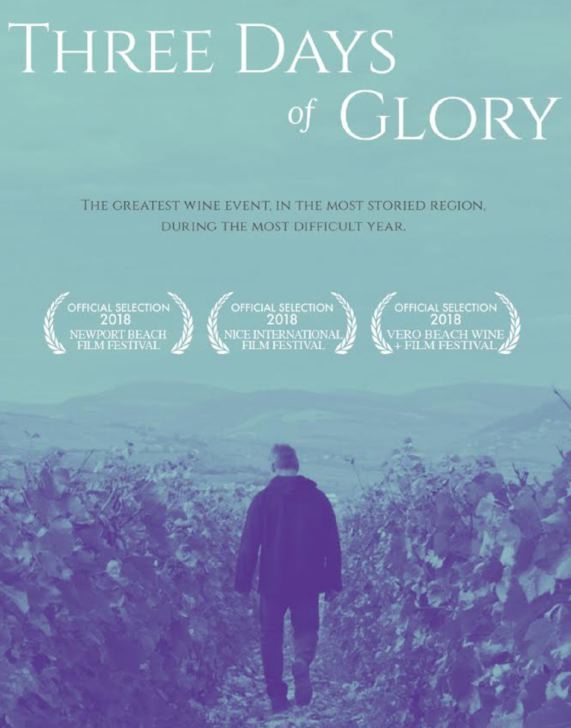 The Pinot Noir Programme New Zealand’s Ministry of Business, Innovation & Employment and New Zealand Winegrowers have co-funded research to find effective and practical ways of breaking the quality productivity seesaw of Pinot Noir. To continue to drive export growth, crucial for Pinot Noir production, the study will look to find the understanding of how to consistently produce high-quality wine at a price point acceptable to the customer while simultaneously increasing both yield and quality in Pinot Noir. Read more about this: https://www.ruralnewsgroup.co.nz/wine-grower/wg-general-news/researching-pinot-noir. Sangiacomo Family Introduces Estate Wines The third generation of the Sangiacomo family has launched a series of wines from their estate vineyards located in Carneros, Napa and the Sonoma Coast. Vittorio and Maria Sangiacomo staked the family’s flag in Sonoma with the purchase of the Home Ranch, a 52-acre fruit tree ranch in 1927. The family’s next generation of Angelo, Buck, Lorraine and Bob Sangiacomo carried on the legacy by growing the apple and pear business and converting to premium grape vineyards in the late 1960s. The Sangiacomo holdings have grown to 1,600 estate acres in Napa and Sonoma. The wines include Sonoma Coast AVA Pinot Noir and Chardonnay, single vineyard designated Green Acres Vineyard Sonoma Coast Chardonnay, Home Ranch Carneros Chardonnay, Roberts Road Vineyard Sonoma Coast Pinot Noir, and Oakview Vineyard Napa Valley Cabernet Sauvignon, and the ViMaria Sonoma Coast Pinot Noir that pays homage to the family legacy and is a special barrel selection from the family’s estate vineyards. For more information, visit www.sangiacomowines.com. Willamette Valley Chamber Music Festival Now in its third season, this festival offers a one-of-a- kind cultural experience in Oregon wine country. Violinist and co-founder, Sasha Callahan, told me that winemakers are partnered with world-class chamber music in unique, intimate spaces, allowing audiences to experience the beauty and craft of extraordinary wine and music hand in hand After two sold-out seasons the festival is expanding this summer to three weekends of chamber music in Oregon wine country. Performances will be on Saturday and Sunday afternoons beginning Saturday, August 11 and closing Sunday, August 26. Concerts include works from pioneering female composes Joan Tower (composer-in-residence), Rebecca Clarke and Fanny Mendelssohn, plus pieces by Beethoven, Haydn, Schubert, Philip Glass and a string quintet by Oregon native Kenji Bunch. Four concerts will be held in the barrel room of J. Christopher Wines, and the festival will return to the gorgeous vista of Elk Cove Vineyards as well. Tickets and more details are available now at www.wvchambermusic.org. Next Gen Takes over McHenry Vineyard For years, I have enjoyed the wines crafted by Henry McHenry, proprietor and winemaker for McHenry Vineyard, located in the Bonny Doon sub-region of the Santa Cruz Mountains, and one of the oldest family-run estate wineries in the Santa Cruz Mountains AVA. Henry is a retired professor of anthropology at UC Davis (where he learned his winemaking skills) who, after 42 harvests, is turning over the winemaking and winegrowing duties to daughter Annalisa McHenry, son-in-law Brandon Blanchard and nephew Ian McHenry. The tiny production of McHenry Vineyard Pinot Noir comes from a 2.5- acre vineyard planted in the early 1990s to Pommard, Pinot 13, Dijon 115 and Swan selection. Winemaking at McHenry has always been old-fashioned and hands-on, using an old Italian crusher acquired in 1977, fermenting in 4x4 open-top vats, and finishing with the same basket press used for years. Even ordering the relatively inexpensive wines is old school using email or a phone number. The website is www.mchenryvineyard.com. Read more about the transition at McHenry Vineyard in this published article: http://www.santacruzsentinel.com/article/NE/20171024/FEATURES/171029855.
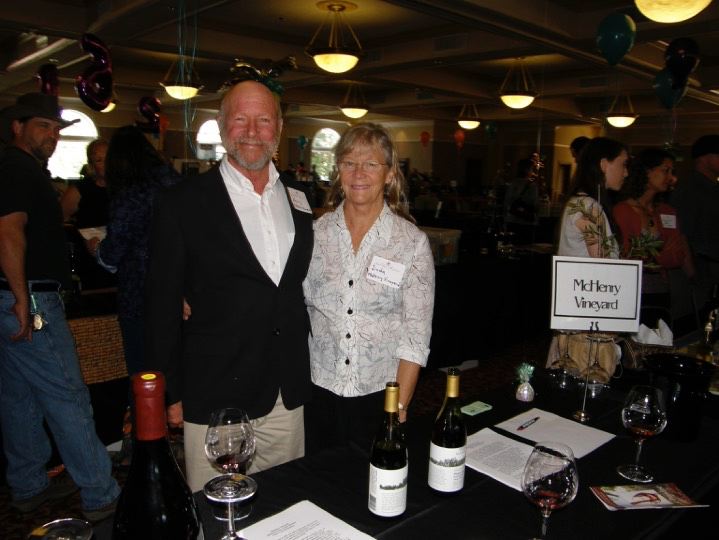 Banshee Wines Sold to Foley Family Wines Banshee Wines, based in Healdsburg, has had remarkable growth since releasing its first wines from the 2008 vintage. Banshee buys all of its grapes on contract and produces its wines at a custom crush facility. Production reached 50,000 cases of Banshee and its value-priced label Rickshaw by 2017. CEO Byron Ziegler, founder of Banshee Wines, was retained as chief executive officer. Pinot Noir from England? I was surprised to learn about the English Pinot Noir scene that has been gaining in quality and popularity in an article that appeared in Decanter online: http://www.decanter.com/wine-news/opinion/news-blogs-anson/english-pinot-noir-wine-quality-376204/. Pinot Noir is the second most planted variety in England at almost 800 acres, accounting for almost one quarter of total plantings. Most of the Pinot Noir is used for sparkling wines, but some still Pinot Noir is showing promise at the level of AOC Bourgogne Rouge wines. A Perfect Pinot Noir? A score of 100 out of 100 for domestic Pinot Noir by any reviewer is extremely rare. I only know of two: a California 2007 Williams Selyem LItton Estate Russian River Valley Pinot Noir and most recently, an Oregon 2016 Patricia Green Cellars Estate Vineyard Bonshaw Block Ribbon Ridge Pinot Noir. These two 100-point wines were reviewed and scored by wine critics working for Wine Enthusiast magazine. When a wine is awarded a 100-point score, the reviewer is saying in essence that the wine is perfect and could not be improved. I have tasted thousands of domestic Pinot Noir wines and I have never found one that I considered “perfect.” A score of 98, meaning near perfection, is the highest score I have ever awarded a Pinot Noir. I believe almost every winemaker would admit that they have never crafted a perfect Pinot Noir wine. It is this shortcoming that provides them the impetus to continue to strive to make such a wine. I am reminded of this quote by football coach Vince Lombardi who said, “Perfection is not attainable, but if we chase perfection we can catch excellence.”
 The Studio By Feast It Forward The Studio, a wine collective bringing together food, wine, design, art and music under one roof is opening in downtown Napa. 16 producers, most of which are from Napa Valley are involved. An exception is Inman Family Wines from the Russian River Valley. Owner Kathleen Inman actually grew up in Napa and her first winery job was at Kent Rasmussen Winery. She and her spouse Simon founded Inman Family Winery in the Middle Reach of the Russian River Valley in 2000. Read more about Inman Family Winery, a stellar producer of Pinot Noir rosé, sparkling wines, Pinot Noir, Pinot Gris and Chardonnay: www.inmanfamilywines.com.
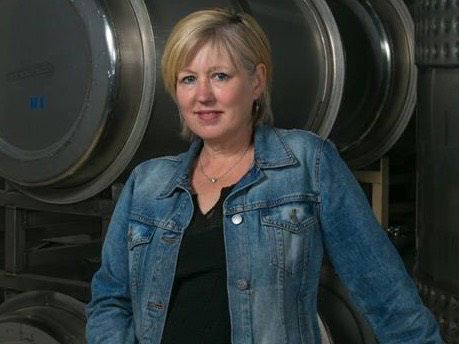
Proper Tasting and Critiquing Pinot Noir Demands Patience
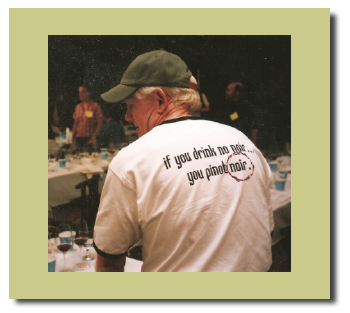 After tasting thousands of domestic Pinot Noir over the past sixteen years for the PinotFile, I have come to the realization that reviews of these wines are frequently and improperly based on a perfunctory sampling over a short period of time. I have found that Pinot Noir, unlike several other varietals, evolves in the glass and bottle over time once it is opened, and it is this evolution that demands revisiting the wine patiently over a day or two or even more. Critics often taste a large number of wines at one sitting. The wines are uncorked, poured into the glass, and then evaluated either immediately or after only a short time in the glass. In reality, the evaluation process is a slam-bam affair based on initial impressions. There is no foreplay, so to speak, that allows Pinot Noir to reach the level of arousal that culminates in a glorious experience. I have come to develop a routine that I try to follow with most Pinot Noir evaluations. In the late morning, the wines are brought out of the wine cabinet at 63ºF, opened and poured into a Burgundy-styled glass. Usually 6-9 wines are tasted at a time. Wines are decanted first if requested by the winemaker. I make three passes through each wine in the lineup, spitting only, allowing an initial impression to develop. I then put the cork back in the opened bottle and allow the wines to sit at room temperature all day. I re-visit the wines briefly before dinner, now swallowing small sips of the wines to get the full pleasure of the wine that has evolved over a several hour period. Finally, I re-cork the wines and revisit them briefly one more time the following day. This is crucial, for wines are often released before they reach their optimum drinking window. I have learned that quality Pinot Noir is a chameleon, with aromas and flavors that change dramatically with oxidation over time. Many times a wine that did not impress upon opening, blossomed into an orgasmic delight over night and the reviews and score I would have given the wine on initial impression would have been unfairly conservative. This extended scheme of Pinot Noir evaluation is time-consuming and demands commitment and patience, but I feel it is the only way to do the job properly. |